#but sadly i have reached the limits of my artistic capabilities for the time being
Explore tagged Tumblr posts
Text

Fallout x Don't Starve!!
#was gonna try to include a deathclaw and radstag#but sadly i have reached the limits of my artistic capabilities for the time being#fallout 4#fallout new vegas#don't starve#dst#a while ago i randomly slammed out a 10k dont starve oneshot#and since then i have both been chasing the high and UNABLE TO CONTINUE WRITING IT#honestly id be happy with just editing it so i could post it... but alas... i am a prisoner of my own mind#and my mind wants to play dst and factorio for 25 hours a day instead
29 notes
·
View notes
Note
Uh seeing this from a super rad writer who I don’t really personally read but I see A LOT of in the g/t space was like a FNAF 2 Jumpscare at full volume so I am going to run my mouth about it.
It was kind of the opposite for me (was an artist, not a writer) and I was BAD! BAD!
I had g/t ocs since I was a little teeny baby. It took me years before I ever found a community for this and thought I was a little weirdo. I couldn’t draw for shit (not saying I’m like an art god now or anything, but improving) and couldn’t write for anything, either.
I was pretty much addicted to genai for a frighteningly long period of time. Before c.ai came out I maxed like two ChatGPT conversations OUT (yes, reached the limit, TWICE!) and didn’t get any sleep I was on it every weekend. When c.ai came out (became popular on the accursed app I no longer use)? Ohh I was COOKED! I have like 5 “characters” just sitting in virtual stillness forever. Like I was bad. It never got to that scary evil parasocial point. c.ai company has so much of my personal data anddd I have to live with that.
I wasn’t so much for the images bc I’ve always had a visceral reaction to like ai patterns (like ai’s weird swirls and shapes make my skin crawl idk why it’s physically uncomfortable for me not joking.) but like I recall trying it out couple of times.
If we are being fr, the ethics of scraping (no matter how fucked up it is to mine and others standpoint) is a matter of opinion, how you define theft, and your personal ethos and morals. Some people feel like if you still literally have the file or paper or canvas it’s not theft. Others feel like even reposting with credit without express personal permission is theft. You can debate about it forever. Womp womp.
What is NOT a matter of personal opinion is the environmental impact of Generative AI.
A generated image of your character is not worth a fucking energy crisis. The knowledge my shit AI fic garbage used the thing that used 6% of ALL of West Des Moines water and is eating up enough energy to power 33,000 homes in the baby fetal state that it’s in is terrifying!
1,000 images in Stable Diffusion being the equivalent of driving a vroom vroom car 4 miles is not good. And it won’t ever be worth it.
Especially with this being because you just do not draw? You say you cannot afford to hire an artist and don’t say you physically can’t draw yourself, so it just looks like you just “don’t.”
The joy of creation is better than sliced bread, pop rocks, and water. Like so cliche but I implore you to start somewhere. You clearly want to create good authentic art of your characters. The desire to write and draw your ocs is like universal I believe. Why deny yourself? It’s “bad”? Who cares. This especially kinda confuses me because you write. Like, good. And a lot. Was your writing always to your liking? Probably not. If AI had became available then, would you rather had started just generating stories than progressing, learning techniques, vocabulary, and just becoming a better writer? I know disparity between one skill and another skill is frustrating (my traditional art being better in my eyes than my digital art is one thing) but
I really do encourage you to try!
Free software I used for a long time:
Mobile: Ibis Paint X
Desktop: Krita (which you can animate on)
Mouse art is fine and can actually become really great with practice, but if you want a tablet
My first drawing tablet was a $19.99 toast of a thing which was the size of my hand and on sale. And I loved it and still have it around somewhere.
You can even rent them at some libraries. Rad!
Now in the case you do not like drawing, just don’t care for it like genuinely (not the product of drawing, but like the actual motion of using your hands if it pains you or you do not have the dexterity capability to create a line)
Picrew! Picrew is free af and is so expansive and great, especially for ocs. It’s a website so buttons can be made big by zooming in. (Sadly limited for people of color like most of my ocs, but they are STILL THERE just harder to find.) There are also a lot of “dress up” apps for free on phone that I used for a while, but they may be overly “cutesy” for a lot of people.
Narrans ur a rad writer. I want to write great fics like you one day. But pls reconsider? Thanks if you read this.
K bye good morning/night
I don’t expect you to answer this question publicly, but I am thoroughly disappointed that you’ve chosen to continue the use of AI art when the artists around you have begged you not to and explained in detail why it’s harmful. I truly hope you realize how much you’re hurting artists by using it and not only apologize, but delete every speck of AI art on your page. Good day.
You don't expect me to answer to answer publicly? At least I am willing to put my name on my stance "Anonymous."
To you, I say you are a coward for not addressing this to me in a way where we can have a conversation about it.
Do you know why I play around with AI generated images? Because sometimes I struggle to make rent. I struggle to obtain groceries on some days. Would you like screen shots of my bank account balance? Do you want me to beg for art for free to others who are struggling just as much as me?
No. It is not fair to the artist to ask them to spend their time making something for me for free and you are not being fair to me because you're not taking my situation under consideration.
I cannot afford to hire an artist for every idea that pops into my head that I want an image for. For things that matter, like my book covers, I have to carefully budget and pay someone to illustrate an image.
I celebrate artists and admire each and every work on every platform I am on. Every piece of fan art I have received or seen I make sure to complement and admire because that is true talent. Artists should be admired and compensated fairly, and I cannot do that on a whim.
You are out here trolling and belittling someone who merely wanted to share an idea and who can't afford to hire an artist to do so on a daily basis. If I had the finances, I would have a team of artists on call to sketch every idea that popped into my head.
But I don't...
Also, if you have a problem with me and my methods, have the courage to post under something other than "Anonymous" where we can have a discussion about options.
I do not wish you ill and do hope that you have a good day, but I ask that you consider your apparent privileged position to either create art to your heart's delight or to pay someone to do it for you because I have neither.
Cheers and, as always, stay awesome! ~Narrans
114 notes
·
View notes
Text
2020 March Update
Happy New Year! Well, I guess it's a bit late for that...
Much of what transpired in the past few months will fall under polish and bug-fixing. Will and I have a mutual friend who got married, so I had the occasion to visit Will to attend the wedding as well as have Will playtest the game in its most complete form yet. He logged 24 hours of playtime and just reached the entrance of the final dungeon. Then we had to call in for the night since it was 5 AM, and I had a flight to catch in the morning.
His completion rate where we stopped was 42% of Heart Pieces, 33% of Energy Gems, and 44% of Moonstones. So... I think we have a pretty lengthy game!
This will take a while to playtest & polish... Will's daytime profession is QA Engineer so he's pretty great at catching bugs. From his playtest, we jotted down 200+ items to fix/adjust. Some as small as a simple misspelling, and some more significant (like Gail being unable to jump when standing at the edge of a steep slope). I'm about half-way through fixing that list...

(Will’s living room where much playtesting was done)
Here are some other things we've accomplished in the past few months. A lot of it falls under polish and bug-fixing, which won't sound outwardly impressive, so I'll dive in a bit under the hood.
-------------------------- Item Balancing --------------------------
There are over 200 items in the game. Of which, 90+ are healing items. While much of their flavor text was already written, their stats weren't yet finally decided. So a large effort was spent to balance them as well as possible. Initially, I balanced items by observation (ex: "The player is relying on this item a lot, so I will nerf it...") Now, I've moved to a more systematic way of doing things. I made an equation that takes in all of an item's parameters, and spits out a score. The higher an item heals, the higher the score. The longer an item takes to consume, the lower the score. And so forth.
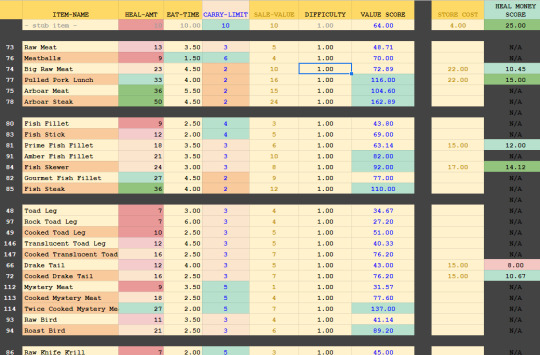
As usual, I used google spreadsheets, since they support equations. I could tweak the values of a healing item, and immediately see how its final score was affected. I also made use of automatic color formatting, so a field becomes highlighted red, if it's particularly bad, or green, if it's particularly good. Of course, the sheet is just a guideline. The aim wasn't to make all items have the same final score, but that they made sense for what they were and when you could get them. Late-game items tend to have higher overall scores versus early-game items. Some items, like doggy biscuits, have notoriously low scores across the board - as a joke!
-------------------------- Cooking Systems --------------------------
Another thing that had to be done with the healing items was finally determine their cooking sequences. 38 healing items could be cooked and will transform into something else. The way I specified that an item could be cooked was to add a a little snippet to an item's "meta data". An example would look something like, "COOK,57,62,ABXY,10,1.5,1".
In order, this specified the item_ID that would result on success (57), the item_ID that would result on failure (62), the button sequence (ABXY), the time you had to complete the sequence (10 seconds), how quickly the cursor should move (1.5x speed), and if the item multiplied on success (1). The system appears simple enough - but it was actually extremely inefficient!
For one, this system didn't allow random button sequences - all "berry fruits", when cooked would have the same button prompts and in the same order every time (ABXY). Initially, I thought having set button sequences would be a feature, but in practice, it was less fun.
Two, this system wasn't human-readable at all. I'd see a sequence of numbers, forget what they were, and have to look them up over and over.
But the biggest problem was that you couldn't evaluate an item's cooking difficulty from these numbers without manual testing. At 1.5 cursor speed, how many times does the cursor pass the center panel in 10 seconds? Maybe that's 15 times... for a 4 button sequence, the player has 11 opportunities to miss - that's too wide a berth for failure. The system also had variable penalties - if you misspressed a button prompt you loss time on the cooking meter. If you didn't press anything, you missed the opportunity, but not the time - but the clock was still ticking, so you did lose time, just not as much. In the end, the difficulty of cooking each item was all over the place. It was also possible to create "unwinnable" scenarios if I made the button sequence too long, the time too short, or the cursor speed too slow. Testing each item manually to ensure doability was too tedious and unreliable - it was a mess!
Which is why, the underlying cooking system was revamped. The new meta data looks like : "COOK,57,62,seq_length,5,spd,1.5,ease_add,2". This is a lot more readable. Beyond the first 3 entries, the arguments could be specified in any order. And their meanings were easy to understand.
"seq_length,5" means a random button sequence of 5 will be generated (no need for me to personally generate it)
"spd,1.5" means the cursor moves at 1.5x speed. I could also leave this field out to get a default value of 1x cursor speed.
"ease_add,2" - the biggest improvement to the system is how we now approach difficulty. We streamlined a miss-press and a missed opportunity as the same level of "mistake", and difficulty is framed as, "how many mistakes is the player allowed to make and still have a successful result?" By default, the player is afforded the ability to make 2 mistakes, and "ease_add,2" bumps the number of allowable mistakes to 4. We then automatically calculate how much "time" the player should have to cook something based on its cursor speed, how long the button sequence is, and how many mistakes the player is allowed to make. This was a more sensible and efficient system that let me knock out all 38 healing item cook sequences in one sitting!
-------------------------- Badges Nearly Done --------------------------
As you may recall from the last update, I was working on implementing the badges.
Thinking up the badge and having its graphic drawn is just the first half. Underneath, the code also needs to be made to track all the relevant player stats - how many times the player fished, ate, got money, used a certain move, etc. Some badges require extra guards, because they can be spoofed. For instance, the "Treasure Hunter" badge is obtained when the player has collected XXXX RIN through the course of your journey. However, there is something like a "gold exchange" in the game, where you could circularly trade gold and RIN to boost this number artificially. It's important to guard against cases like those.
So far, 30 of 33 badges are implemented. The last three have to do with late-game things that have inter-dependencies that we're still figuring out. The Speed running badge for instance is still dependent on two things. One, I need to speed run the game a few times to see how fast it's possible to beat the game and decide finally what's a reasonable time-limit. Two, there's actually a time-keeping bug which can inflate the game time if the system is left in sleep mode. I don't expect either things will be too hard to figure out - just gotta find the time for it.
-------------------------- Script Extra Polished --------------------------
We continued to polish the script, which I thought was basically done before. We added some extra NPCs here and there, and fleshed out the world with lore text where it seemed appropriate. In the end, the game's script ballooned to over 100,000 words! Hah... It's definitely DONE now however!
Some interesting things I noted as I was polishing old text - there were quite a few instances where Gail talks. I began the game's development with the idea that Gail should definitely talk since I wanted her to be a more active participant in what she chose to do. But I discovered later that if Gail talks, but only talked a little, she comes off as a very reticent person. There's no middle lane here - you're either all in or all out.
If Gail was a silent protagonist, she still talked symbolically. She is understood to be talking based on how people react to her - kinda like Link. So that's the direction I went with in the end (again). When Gail has occasion to talk, it comes in the form of a player dialogue choice. She also has an inner voice when she needs to remind the player to do something.

Another reason I went with this direction, is for brevity. Take this exchange for instance: QUEST GIVER : Can you help me find this super rare ingredient? GAIL : Maybe. I can't make any promises...
If Gail is silent, I can reduce those 2 lines to 1. QUEST GIVER : Can you help me find this super rare ingredient? GAIL : ...
-------------------------- Business Taxes --------------------------
Not too exciting, but new year means I gotta do taxes for the business. They're a lot more complicated than personal taxes, and more expensive! Since the game hasn't sold anything, you would think there'd be nothing to file. Hah! If only... The business is there so we can act as a legal entity and record expenses for when we do start selling. I really want to focus on making games, but there’s a small percentage of it that is sometimes boring and dreadful (-_-) ... still it needs to be done.
------------- Why no Public Beta Testing? -------------
As you may have noticed, I haven't put out any public calls for testing help despite being at that stage. Some have offered to help, which I appreciate! But sadly, I cannot accept. Here's the story for that.
Two and a half years ago, I got my hands on a console dev kit - that's very exciting, so I hurriedly took the steps to convert my dev station to be console-capable. After about two weeks, I had the console version working and integrated into my workflow, so all appeared good...
4 Months later, an artist needed an updated PC build to test some new art assets, so I went to build a new PC version. We use Unity, so generally you just need to click your desired build target, and hit "build". However, I now discovered that by attaching the console "hooks" into my work environment, I could no longer build to PC... It was possible, from my end, to test the game from the dev station in dev mode, which was why it went undiscovered for so long.
I did try to excise the hooks, but proved unsuccessful after a day of work. I decided to take this as an opportunity to focus exclusively on the console version first, which afforded me some niceties. Knowing that there's a standardized control scheme meant I could make full use of the control stick for the fishing mini-game. I also didn't need to create a rebindable keys menu - which is a MUST for PC versions... Most importantly, it lets me focus on making the one version as good as possible before moving onto the next. I have NO idea how those other guys release on all platforms at once...
Chalk it up to inexperience. In my defense, this will be my first commercial release, so bear with me. Don't worry, I still plan to make the PC version! It's a bit unconventional, but we're just going to go in the reverse direction of the usual. Console first, then PC, then other consoles. Wherever it makes financial sense, there we will be. (Sorry Ouya!)
Back to the original question - that's why I haven't sent out any public calls for playtesting. Current playable builds of the game are locked to my console dev kit. So actual playtesting unfolds in a very closed setting. Like what I did with Will, I literally sit behind the playtester, breathe down their neck, and watch them play, taking notes all the while.
But since I'm observing the player directly, even just one playthrough nets me a TON of bugs and adjustment tasks. So it evens out I think.
-------------------------- Trailers, Release Dates, etc. --------------------------
Alright, get your frowns ready...
We finished two trailers, and they're raring to go. BUT! We can't show them yet... We're sort of at an awkward spot where we're waiting on some conversational threads to conclude. Say we win a slot in a show - that'd be a HUGE plus for us - but that may also be contingent on us having NOT shown anything substantial yet. The game in its unrevealed state is a negotiating chip. So we're trying to leverage that... and you can only do the reveal once...
We also want to have some "actionable" items in the trailer - a launch date you could mark on your calendar, a wishlist, a website you can visit, etc. So since those things aren't entirely lined up yet, we can't let the trailers rip just yet...
Right now, I can only say we're *aiming* for a late Q2/early Q3 launch. But I can't commit to anything concrete yet. As soon as we know, we'll happily sing it from the rooftops. I hope I can update this blog sooner with good news, but if things move slowly again, I'll send out the next "we're alive" update 2 months from now (end of April).
I know it's frustrating to have nothing major after so long still, so I captured some gameplay footage... May it sate your hungers!
-------------------------- Footage 1 : Fishing --------------------------
You've seen pictures of the fishing, but never video of it in action. Well, here it is!
youtube
(And right after I uploaded the video, I noticed there actually was a video of fishing before. D’oh)
The idea is simple. First, get the lure in front of a fish, and assuming the fish isn't scared, it will soon bite. Then begins a fight sequence, where your energy meter is pitted against the fish's energy meter. Whoever's energy outlasts the other's wins.
The fish's resistance is represented by a red moving circular subsection. You fight the fish by pushing the control stick and keeping it on the subsection, which will dart around and try to escape you. Bigger and tougher variants of fish will do a "shake" which will reverse the wheel. When the wheel is reversed, so too are the controls, so it gets extra tricky!
While fishing, your energy meter doesn't recover, so one of the ways you level up your fishing ability is by finding energy gems to increase your max energy. There's another way - but we'll keep that a secret.
-------------- Footage 2 : Kobold Boss Fight --------------
You can actually skip the next section if you'd prefer to be surprised and you find your hunger for info sated. That's how I prefer to consume the games that I know I'm going to get. If you're still hungering for info, and you don't mind the slight spoilers, then feel free to proceed!
The next video shows the new Kobold Boss fight. Let's take a moment to reflect on the old game's visuals and how far it's come...
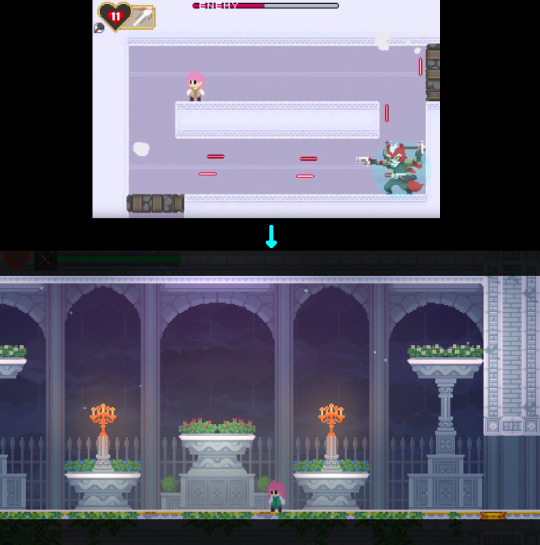
(we've come a long way since the time of the flash game)
youtube
You'll notice the Kobold boss has a name now - Katash! He's a significant enough character that he's earned it. The second thing you'll notice is that he looks better!
Some people have humorously pointed out that the old boss looks like Wolf O'Donnel from Star Fox. There's a funny story behind that. Basically I asked an artist to draw me a space wolf. And the artist, whom I'm assuming wasn't familiar with Wolf O'Donnel, drew that - all of it - all the animations and everything. The first time I laid eyes on it, it was already done, so it was too late to ask for edits. So I just ran with it.
That was seven years ago. Nowadays, I know to involve myself more in the process. I ask for just the design first, and we don't move forward with animations until we're happy with the design. Life lessons!
By the way, if you like Katash’s personal boss theme, give it a lesson on Will's Sound cloud (LINK)
-------------------------- Fan Arts -------------------------- Lots of fan art came in over the past 3 months!

This one is a pixel animation made by Pimez, and shows Gail singing a Christmas carol in various parts of the game. So cute! Years ago, I too was making little animated gifs for my favorite games, so it really brings me back!

This one was made by cARTographer (twitter link) after a request by Deli_mage, so thank you both. Gail rocking stylish boots with a pose that shows confidence in her batting skills. Very anime - Love it!
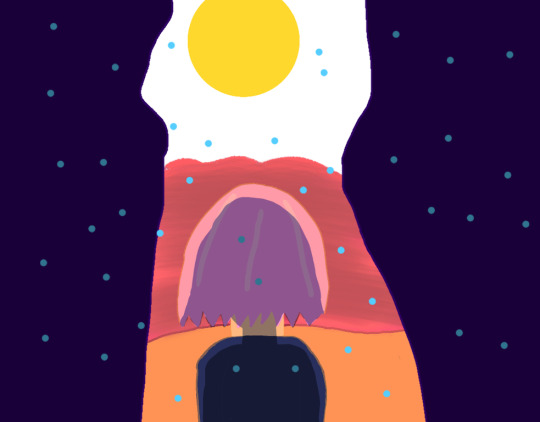
Another submission of laptekosz of the Last Song of Earth area. Whereas the last picture depicted the night sky, now the orange trees are lit by a rising sun. Artfully done! Kinda makes me want to eat eggs. I hope you'll like the new Last Song of Earth area just as much :D
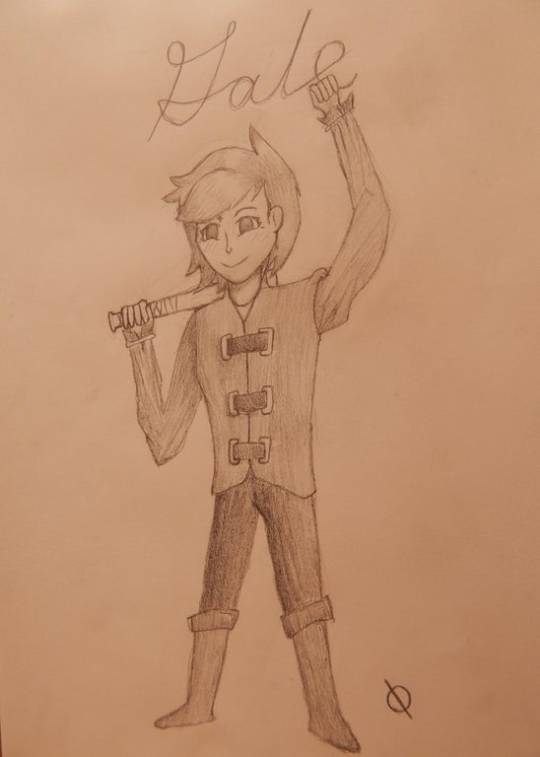

A new artist to the scene, Not_Quin, submitted two pictures, one of Gail and one of the Sand Drake re-imagined as a centipede. I'm always a fan of these re-imaginings! I like how it's spiky all over and appears to be wearing a skull mask. The Sand Drake is often pointed out to be too similar to Zelda's Dodongos, so maybe a long slithery body would have indeed served better. Fun fact, long ago, when we were working on Phoenotopia 2 in earnest, we actually had a giant man-eating worm planned - WIP animation depicted below. One day... one day...
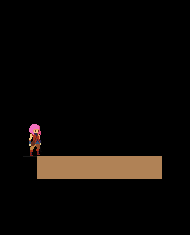
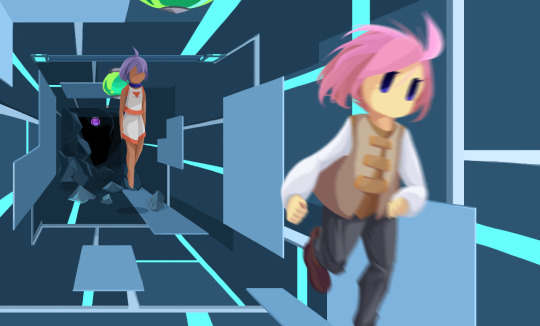
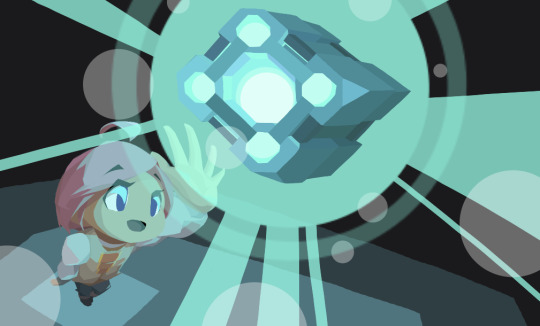
Negativus Core made two cool new arts! I'm really impressed by their use of unique perspective! Having characters run towards the screen or reaching close to the screen from afar is tricky since the proportions get all distorted - but not an issue for Negativus Core! Love the blur on Gail to show speed, with 66 in focus - really skillfully done! And the cube. Amazing!
--------------------------
I'm really honored by the huge fan art community. Thank you all!
50 notes
·
View notes
Text
MDZS meets MBTI
The Myers-Briggs Personality type is older than the Enneagram, and consists of sixteen types based on four different pairs of personality traits: Introversion vs. Extroversion; Sensing vs. Intuition, Feeling vs. Thinking, and Perceiving vs. Judging. To be clear, none of these categories are black and white–for example, all Feelers are capable of using logic, and Thinkers have feelings and care about people–but it’s a cool way of understanding personalities.
I’m not going to do every character, but simply the characters I think are most important and the ones for whom I have the most information to analyze (some is def guesswork). :P Also, this is just my opinion and definitely open to debate! MBTI isn’t a science; it’s just something I do for fun.
Wei WuXian-->ENFP “The Campaigner”��

Unlike many of the others, Wei WuXian’s type seems very, very obvious. He might be the most ENFP to ever ENFP.
The ENFP personality is a true free spirit. They are often the life of the party, but unlike Explorers, they are less interested in the sheer excitement and pleasure of the moment than they are in enjoying the social and emotional connections they make with others. Charming, independent, energetic and compassionate... if they’ve found a cause that sparks their imagination, ENFPs will bring an energy that oftentimes thrusts them into the spotlight, held up by their peers as a leader and a guru – but this isn’t always where independence-loving ENFPs want to be.
Lan WangJi-->ISTJ “The Logistician”
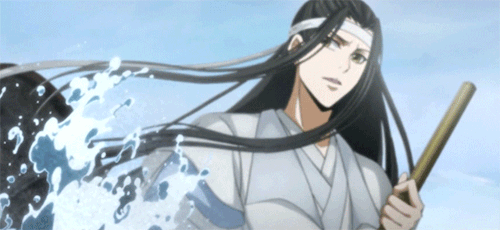
Why yes, Lan WangJi is the exact opposite of his beloved Wei WuXian. He’s another one that seems pretty obvious to me.
ISTJ personalities are no-nonsense... ISTJs have little tolerance for indecisiveness, but lose patience even more quickly if their chosen course is challenged with impractical theories, especially if they ignore key details...
ISTJ personalities adhere to established rules and guidelines regardless of cost, reporting their own mistakes and telling the truth even when the consequences for doing so could be disastrous. To ISTJs, honesty is far more important than emotional considerations, and their blunt approach leaves others with the false impression that ISTJs are cold, or even robotic. People with this type may struggle to express emotion or affection outwardly, but the suggestion that they don’t feel, or worse have no personality at all, is deeply hurtful.
Jiang Cheng-->ISTJ “The Logistician”
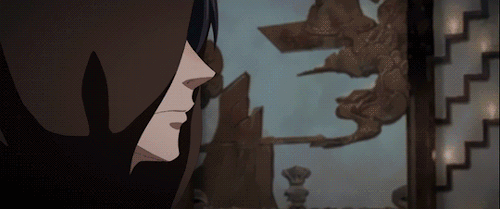
Yes, the same type as Lan WangJi, just a tad more bitter. Personality tests, even if two people seem to fit a type extremely well, can’t define someone, because people are just so infinitely more complex. The part about being taken advantage of reminds me here of how Jin GuangYao points out that people took advantage of Jiang Cheng’s need to prove himself to drive a wedge between him and Wei WuXian.
ISTJs’ dedication is an excellent quality, allowing them to accomplish much, but it is also a core weakness that less scrupulous individuals take advantage of. ISTJs seek stability and security, considering it their duty to maintain a smooth operation, and they may find that their coworkers and significant others shift their responsibilities onto them, knowing that they will always take up the slack. ISTJs tend to keep their opinions to themselves and let the facts do the talking, but it can be a long time before observable evidence tells the whole story.
Lan XiChen-->ENFJ “The Protagonist”

Sadly, this description is pretty accurate to Lan XiChen’s strengths and also his flaws--in particular in terms of his relationship with Jin GuangYao.
ENFJs radiate authenticity, concern and altruism, unafraid to stand up and speak when they feel something needs to be said. They find it natural and easy to communicate with others, especially in person, and their Intuitive (N) trait helps people with the ENFJ personality type to reach every mind, be it through facts and logic or raw emotion. ENFJs easily see people’s motivations and seemingly disconnected events, and are able to bring these ideas together and communicate them as a common goal with an eloquence that is nothing short of mesmerizing.
The interest ENFJs have in others is genuine, almost to a fault – when they believe in someone, they can become too involved in the other person’s problems, place too much trust in them.
Jin GuangYao-->ESFJ (?) “The Consul”
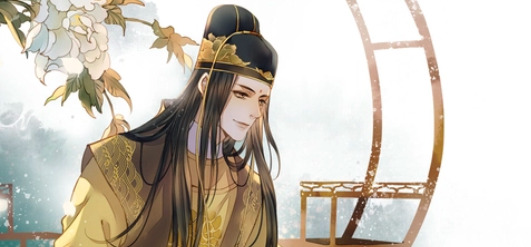
This one I’m less certain of--FJ seems certain to me, but I/E and N/S is a bit debatable. I think he best meets the description of “the Consul” though.
ESFJs are more concerned with fashion and their appearance, their social status and the standings of other people... ESFJs love to be of service, enjoying any role that allows them to participate in a meaningful way, so long as they know that they are valued and appreciated. Coming to terms with their sensitivity is ESFJs’ biggest challenge – people are going to disagree and they’re going to criticize, and while it hurts, it’s just a part of life.
Nie MingJue-->ESTJ “The Executive”
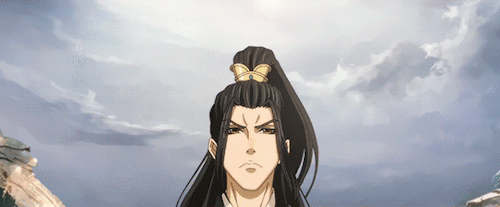
Less certain of E or I than for the other three, but the way he failed to overcome the challenge of how not everyone processes the same way seems very ESTJ to me.
ESTJs are representatives of tradition and order, utilizing their understanding of what is right, wrong and socially acceptable to bring families and communities together. Embracing the values of honesty, dedication and dignity, people with the ESTJ personality type are valued for their clear advice and guidance, and they happily lead the way on difficult paths.
ESTJs are aware of their surroundings and live in a world of clear, verifiable facts – the surety of their knowledge means that even against heavy resistance, they stick to their principles and push an unclouded vision of what is and is not acceptable... they expect their reliability and work ethic to be reciprocated – people with this personality type meet their promises, and if partners or subordinates jeopardize them through incompetence or laziness, or worse still, dishonesty, they do not hesitate to show their wrath...
The main challenge for ESTJs is to recognize that not everyone follows the same path or contributes in the same way.
Nie HuaiSang-->ISFP “The Adventurer”

Interesting name for a timid HuaiSang, but I really do think he is an ISFP. He is notably one of the few Nie Sect leaders who doesn’t seem at risk of dying from a qi deviation, and hence his less brutish way of ruling might actually, in the long run, be good for his sect. (NMJ would be proud... maybe.)
ISFP personality types are true artists, but not necessarily in the typical sense where they’re out painting happy little trees. Often enough though, they are perfectly capable of this. Rather, it’s that they use aesthetics, design and even their choices and actions to push the limits of social convention...
If these goals and principles are noble, ISFPs can act with amazing charity and selflessness – but it can also happen that people with the ISFP personality type establish a more self-centered identity, acting with selfishness, manipulation and egoism.
Wen Qing-->ENTJ “The Commander”
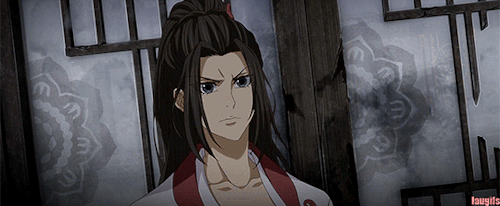
Another one I feel fairly confident in. Wen Qing is a boss queen who gives birth to one of the series’ most iconic lines: “thank you, and I’m sorry.” She’s able to win the respect of Wen RouHan and even some people who hate the Wens, and thinks outside the box, theorizing on core transfer but hesitant to actually try it when she isn’t fully confident.
ENTJs are natural-born leaders. People with this personality type embody the gifts of charisma and confidence, and project authority in a way that draws crowds together behind a common goal. But unlike their Feeling (F) counterpart, ENTJs are characterized by an often ruthless level of rationality, using their drive, determination and sharp minds to achieve whatever end they’ve set for themselves.
Wen Ning-->INFP “The Mediator”
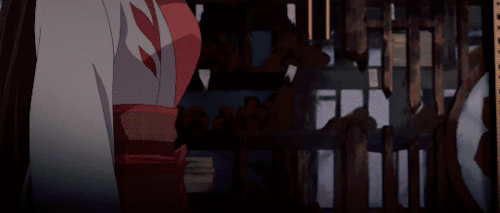
I was torn between S and N, but I went with INFP because he is more focused on thinking about possibilities--in fact his arc is about learning to be confident in his own possibilities and to explore them.
INFP personalities are true idealists, always looking for the hint of good in even the worst of people and events, searching for ways to make things better. While they may be perceived as calm, reserved, or even shy, INFPs have an inner flame and passion that can truly shine.
Jin ZiXuan--> ESTP, “The Entrepreneur”
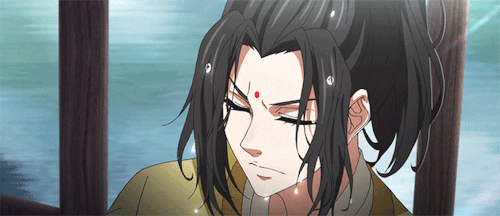
Does he have enough of a personality for me to really analyze him? Maybe not but I like him a lot. He is motivated by what seems like pride at the beginning, but we later realize he cares deeply about the people around him and genuinely cared for Wei WuXian because his wife did.
Inspiring, convincing and colorful, they are natural group leaders, pulling everyone along the path less traveled, bringing life and excitement everywhere they go. Putting these qualities to a constructive and rewarding end is Entrepreneurs’ true challenge.
Jiang YanLi-->INFP “The Mediator”
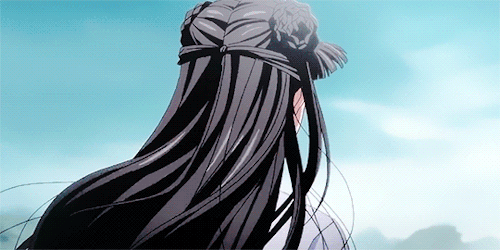
Shijie was indeed the mediator between her two brothers, and it’s her legacy of love and kindness, of wanting Wei WuXian to live even at the expense of her own life no matter what he’d done, that makes a huge difference.
Luckily, like the flowers in spring, INFP’s affection, creativity, altruism and idealism will always come back, rewarding them and those they love perhaps not with logic and utility, but with a world view that inspires compassion, kindness and beauty wherever they go.
Jin Ling-->ESTP, “The Entrepreneur”
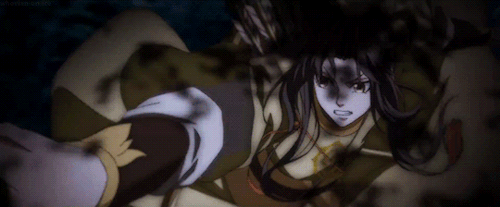
Jin Ling is the hardest one to pin down and I’m mad because he’s one of my favorites. He is highly emotional, but I think he’s an ESTP like his dad.
Entrepreneurs keep their conversation energetic, with a good dose of intelligence, but they like to talk about what is – or better yet, to just go out and do it. Entrepreneurs leap before they look, fixing their mistakes as they go, rather than sitting idle, preparing contingencies and escape clauses.
Lan SiZhui-->INFJ “The Advocate”

My type.
INFJs indeed share a unique combination of traits: though soft-spoken, they have very strong opinions and will fight tirelessly for an idea they believe in. They are decisive and strong-willed, but will rarely use that energy for personal gain – INFJs will act with creativity, imagination, conviction and sensitivity not to create advantage, but to create balance.
Lan JingYi-->ESFP “The Entertainer”
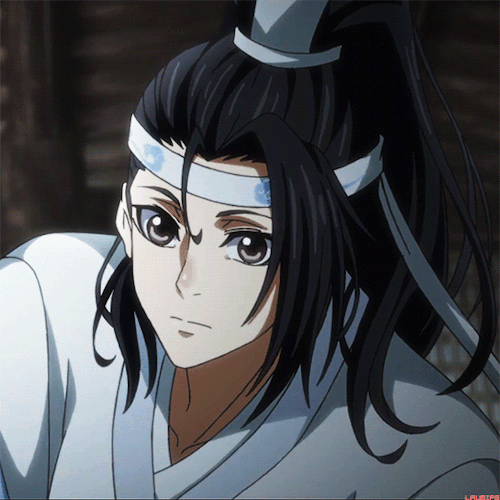
He’s pretty easy to figure out. I constantly wonder how he fares in the Gusu Lan Sect.
...they love putting on a show for their friends too, chatting with a unique and earthy wit, soaking up attention and making every outing feel a bit like a party. Utterly social, ESFPs enjoy the simplest things, and there’s no greater joy for them than just having fun with a good group of friends.
Xue Yang-->ESTP “The Entrepreneur”
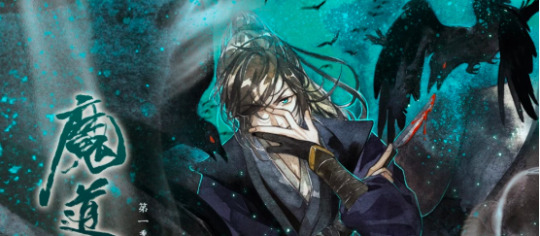
ESTPs are the likeliest personality type to make a lifestyle of risky behavior. They live in the moment and dive into the action – they are the eye of the storm. People with the ESTP personality type enjoy drama, passion, and pleasure, not for emotional thrills, but because it’s so stimulating to their logical minds. They are forced to make critical decisions based on factual, immediate reality in a process of rapid-fire rational stimulus response.
A-Qing-->ESTP “The Entrepreneur”
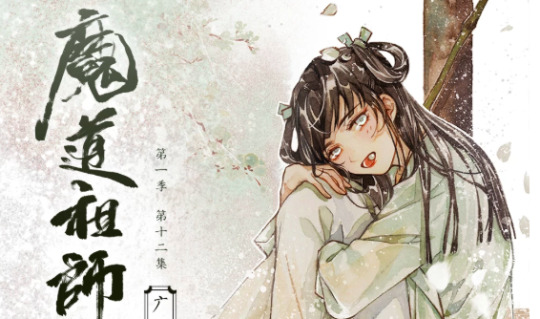
Yes, I think A-Qing is the same type as Xue Yang, which doesn’t surprise me because they are actually extremely blatant foils in the story. It’s funny the description notes how observant ESTPs tend to be, because that’s something A-Qing absolutely is, noticing Xue Yang’s minuscule changes in expression and keeping her from trusting him, and Xue Yang is also incredibly observant of her words to realize she might just not be blind after all.
With perhaps the most perceptive, unfiltered view of any type, ESTPs have a unique skill in noticing small changes. Whether a shift in facial expression, a new clothing style, or a broken habit, people with this personality type pick up on hidden thoughts and motives where most types would be lucky to pick up anything specific at all. ESTPs use these observations immediately, calling out the change and asking questions, often with little regard for sensitivity. ESTPs should remember that not everyone wants their secrets and decisions broadcast.
Xiao XingChen-->ISFJ “The Defender”
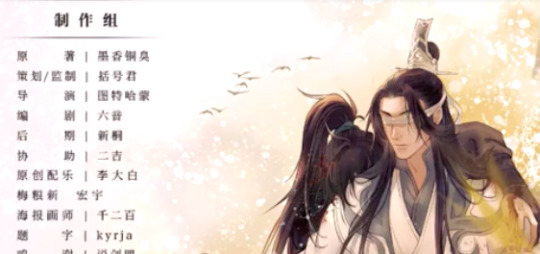
The following description really reminds me of XXC especially after he hears the story about Xue Yang’s love of candy as a child, and every single day thereafter buys him and A-Qing a candy.
ISFJs take their responsibilities personally, consistently going above and beyond, doing everything they can to exceed expectations and delight others, at work and at home... Naturally social, an odd quality for Introverts, ISFJs utilize excellent memories not to retain data and trivia, but to remember people, and details about their lives. When it comes to gift-giving, ISFJs have no equal, using their imagination and natural sensitivity to express their generosity in ways that touch the hearts of their recipients
Song Lan-->INTJ “The Architect”
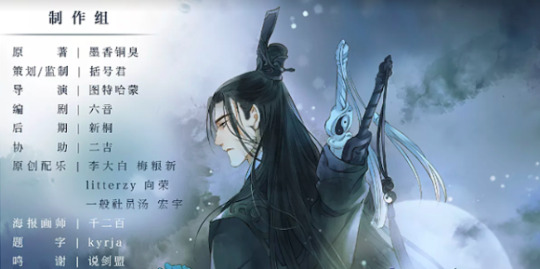
There’s not as much to go on for Song Lan, but what we do have seems to suggest INTJ to me, particularly in how someone who would spend years looking for a friend would refuse to consider that Xue Yang might have changed at all.
INTJs are simultaneously the most starry-eyed idealists and the bitterest of cynics, a seemingly impossible conflict.
Yu ZiYuan-->ESTJ “The Executive”
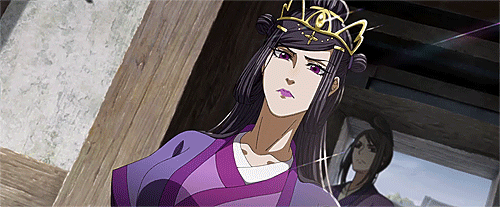
Welp. The Purple Spider is definitely an Executive.
ESTJs are representatives of tradition and order, utilizing their understanding of what is right, wrong and socially acceptable to bring families and communities together. Embracing the values of honesty, dedication and dignity, people with the ESTJ personality type are valued for their clear advice and guidance, and they happily lead the way on difficult paths.
125 notes
·
View notes
Photo
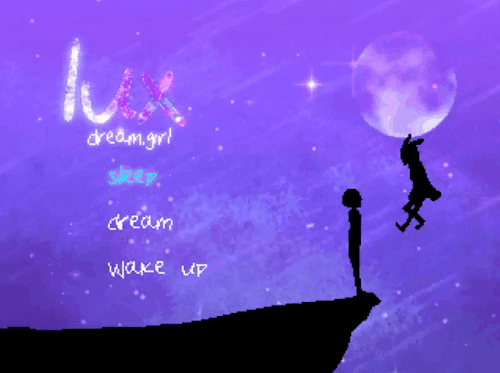
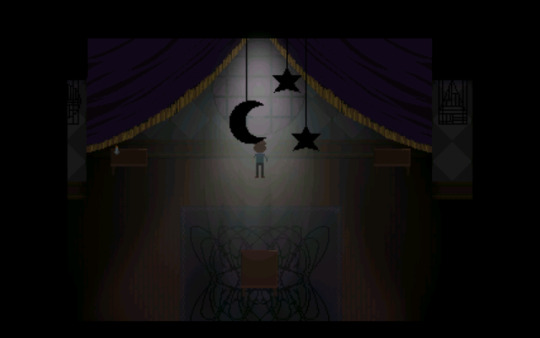
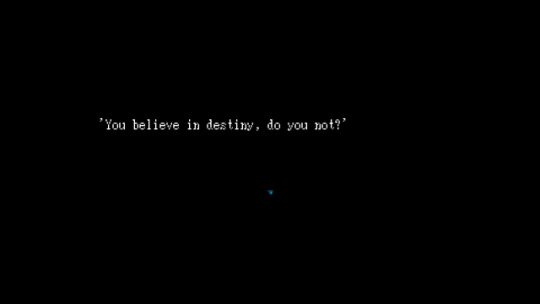
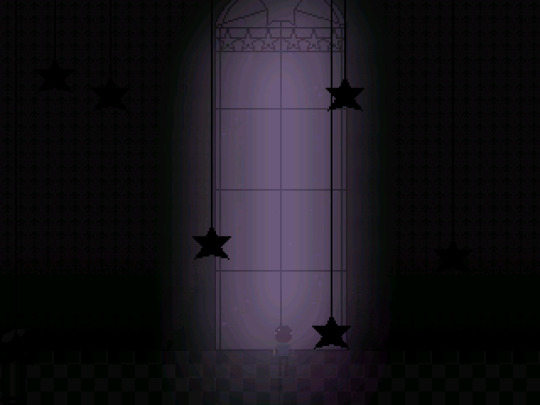
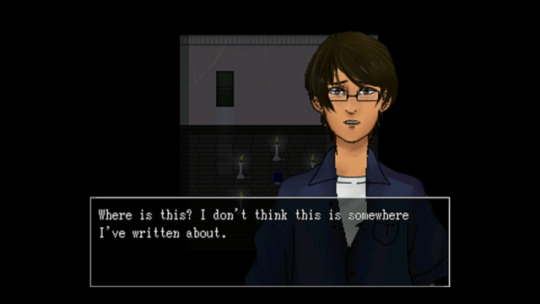
November’s Featured Game: lux (dream.girl)
DEVELOPER(S): Rindre Rindere ENGINE: RPGMaker 2k3 GENRE: Psychological Horror, Exploration SUMMARY: lux (dream.girl) is a surreal psychological horror game created in RPG Maker 2003 where you play as Benjamin, a socially inept teenage writer who struggles with depression, loneliness, and writer’s block. When he decides to try lucid dreaming to figure out how to push his story forward, he meets new friends, new enemies, and his literal dream girl. Making certain choices will either help or hurt his relationships, and the outcome of his story.
Download the demo here!
Introduce yourself! *Hi! I'm Rindre! I've been working on RPG Maker for about 5 or 6 years at this point! First and foremost, I'm an artist, then a game developer, then a voice actor. I am also a garlic bread enthusiast. You might also know me as: -The voice of Aria/the lead translator in Aria's Story -Will's Teacher in The Hanged Man -The mod of Yumeresource -The admin of the RPG Horror Discord server -The host of the Pixel Horror Jams! I'm also on plenty of teams, mostly as a voice actor. These include b/f, AURORA, and The Doctrine of Perseverance.
What is your project about? What inspired you to create your game initially? *Rindre: lux is about a boy named Ben, who is an aspiring writer who hits a writer's block and tries to take up lucid dreaming to interact with his stories and characters find out how to advance his story. He ends up meeting interesting people, including his literal dream girl. Yume Nikki is a big inspiration for me. My stories I had written when I was younger also played a huge part, and I decided to recycle bits and pieces of them into lux. Ultimately, the frustrations and experience of being a content creator inspired me to make the game. Hopefully these themes will ring universal to whoever relates to being a creator as well.
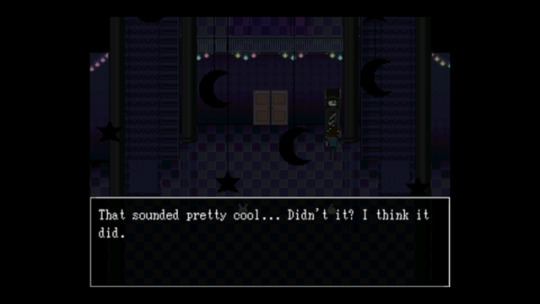
How long have you been working on your project? *Rindre: You could say 5 years, or 2 years, or since July 2017! lux actually originated as a Yume Nikki fangame in 2012 (as are all games I've made...). I picked it up again on October 2 2015 as a concept to keep a work log, but actually making it into a tangible product took me until 2017's Pixel Horror Jam. The work log has 30+ pages to it! The Yume Nikki fangame version was prepared to be released, but I forgot, and now I'm too ashamed to release it because I meant to do it 5 years ago :(
Did any other games or media influence aspects of your project? *Rindre: I'm a big fan of psychological and sci-fi/cyberpunk media. These things usually ask: Who are we, and who are we in other people's eyes? What defines us? What does it mean to be an individual in our society? It's a question I like to ask myself and explore in my own projects. My major inspirations who ask these existential questions are deep within Satoshi Kon's works and Philip K Dick's stories, as well as other movies that were inspired by those two or are in the genre (like The Matrix, Inception, Akira, Ghost In The Shell, Serial Experiments Lain, etc.). Some other inspirations and influences that might be surprising are: Kappa Mikey (art style mixing), Vocaloid producers (Crusher-P, Mothy, Yuyoyuppe), Evangelion, Linkin Park, the Hamtaro GBA games, Kirby, and my own dreams. Unsurprisingly, Yume Nikki is the biggest inspiration. I really like the concept of dreams and escapism, and how it often plays into existentialism.
Have you come across any challenges during development? How have you overcome or worked around them? *Rindre: They say that when making a game, 10% is actual development and 90% is bugfixing/quality assurance. This is VERY TRUE. I spent a couple months working with my bugtesters (Thanks Biel, Choko, Meaka, Pinkuboa, and Uboaappears). The actual demo was a bunch of crunch time for the jam, which was July - August). There were a lot of bugfixes involved, including a bug I was so puzzled with and thought I couldn't fix but the solution was so simple. It took me a month to figure it out! The RM2k3 update caused a bit of trouble for me, but I thank my bugtesters endlessly for helping me squash most, if not all, bugs. On the other hand, in case anybody asks, yes: I have lucid dreamt of my characters in lux when I hit a roadblock. These were never successful. I've only been able to do it twice, both by accident.
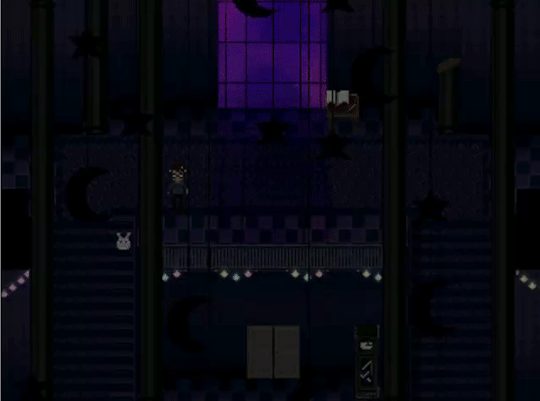
Have any aspects of your project changed over time? How does your current project differ from your initial concept? *Rindre: I usually go into development with a clear idea in mind with certain events and endings, but lux differs greatly from its old Yume Nikki counterpart (dream.girl). Notable major changes: Ben now wears glasses. Ben is now a writer. Stella used to not be a bunny. Stella also did not have any stars in her eyes before. The only things retained was the concept of dreaming a dream girl, and Ben's and Stella's names and facial appearance. Even if I make a bunch of plot outlines and flowcharts, things change, but it's natural! The stories that occur within lux also have changed slightly plot-wise from their earlier pre-2012 counterparts (most were written over 10 years ago!), and are begging for a facelift. One involved parkour, but sadly, there is no parkour anymore :(
What was your team like at the beginning? How did people join the team? If you don't have a team, do you wish you had one or do you prefer working alone? *Rindre: I prefer working alone when it's my project! I like working at my own pace, but if needed, I'll reach out to other people for help. I like helping people out on their projects too, but when it comes to my own, I like to handcraft everything by myself. It shows me what I'm capable of doing, and gives my game a "this was 100% made by me" stamp.
What is the best part of developing a game? *Rindre: Making music is relaxing and lets me convey a mood or theme without having to take out my tablet to draw or write something extensively. Being able to relax yet still work on the game is great. I like nights where I can sit down and make something nice I can put in my game. A lot of them are on my SoundCloud (Rindere), but some of the really nice ones are ones I haven't uploaded there. I'm really not a musician, but I did take a class on music technology. My favorite ones going to be in lux on my SoundCloud are "Nepenthean", which is also Ben's theme, "Choke On Your Misery", and "Empyria Incarnadine". It's also really nice to get files from your voice actors and they sound EXACTLY like how you thought your character would sound like! Special thanks to Aidan, Mizu, JR, and Nuei.
Do you find yourself playing other RPG Maker games to see what you can do with the engine, or do you prefer to do your own thing? *Rindre: I prefer to do my own thing! I like to push RPG Maker 2003 to the limit. A lot of the cool effects were done before the major update of RM2k3 that came out earlier last month. Some things I thought were never possible in RM2k3 are things that I made possible after some thought. Like any problem, it can be solved in a bunch of ways, even if you have limitations.
Which character in your game do you relate to the most and why? (Alternatively: Who is your favorite character and why?) *Rindre: The character I relate to the most is actually my least favorite character. It's Ben! I specifically modeled him after myself but changed certain things, like the intensity of his reactions. It was actually difficult to write him, because I had to think about how I would react in the situations I put Ben in. I feel like I had to get into some kind of mindset that was "mine", but also "not mine" as well.
Looking back now, is there anything that regret/wish you had done differently? *Rindre: I feel like I could've released the game sooner, or continued work on FLUX instead. I would like to go back to working on FLUX soon, since I haven't worked on it in a long while. But after hosting the Pixel Horror Jam with Choko and jamming on this game, I'd like to rest up a bit before I take on a big project again.
Once you finish your project, do you plan to explore game's universe and characters further in subsequent projects, or leave it as-is? *Rindre: Because lux is part of the -UX Series, it would naturally be a series with other entries. I don't know if or when they'll all be created, nor if they'll all be games, but I do eventually hope to see it finish. Something I want to explore is to further flesh out the stories Ben has written, especially because they were concepts written before lux ever came up as a concept. I've also given them -UX titles! I think I'll work on Crux/quX next.
What do you look most forward to upon/after release? *Rindre: I am donating proceeds to the One More Light Fund with what is being donated to the itch.io-uploaded version of lux, so I really am looking forward to donating to a cause that is important to me. I encourage people to donate to the OML Fund directly, not through me. I also really like fan reaction, but I love the catharsis of releasing something you've made. It's a mix of relief and pride, but a little bit of anxiety because you don't know how well the fan reaction will be. I hope that my game will affect somebody in a positive, personal way, whether it be a new favorite game, something for them to draw, or become inspiration for their own works. I look forward to free time and rewarding myself with something good, like chicken parmesan too!
Is there something you're afraid of concerning the development or the release of your game? *Rindre: I constantly ask, "Is my game worthy enough for others to play? Is my game good enough?" But when it comes down to it, really you're asking it to yourself, not to the people that will play your game. Sometimes, you have to sit down and ask yourself, "Am I satisfied with what I have made so far?" Then you go down the list of things you've made and say either, "I'm proud of this!" or "This could use some more work." and you fix it accordingly. The first audience of your game is always you, so if your game is "worthy" and "good enough" to you, then it is for other people.
Question from last month's featured dev (Team Galanx): What kind of stories do you appreciate most in RPG Maker games? For example, do you like ones based off real-life experiences, fantasy elements, or morals? *Rindre: My series of games is called the -UX Series, with there being 4 main stories that are related to each other: "FLUX", "lux", "Ux.", and "X". The rest of the titles end in "-ux" as well. It was only natural to do that!
Do you have any advice for upcoming devs? *Rindre: Game Development -Give things meaningful names. -Back up your work in three different places. -Back up your games frequently. -Never be afraid to remake things, but do this occasionally. If you do this frequently, you'll be caught up in a loop of perfectionism. -Think if the cool new thing you want to put in will actually serve a proper purpose in the game. If it's only there just to be cool, don't put it in your game. -If things don't work out, it's perfectly fine to scrap ideas. -Don't pander. Make a game you want to make, not what others want to play. Releasing your game -Reach out to people who haven't played games similar to yours. You'll have opinions that you wouldn't normally get, compared to others who are familiar with your type of game. -Learn how to take critique. This might be the skill that will take you the longest to hone. -Not everyone is out to get you, but sometimes there will be people who want to bring you down. Even if this happens, there are always people there to support you. -You don't have to agree with every critique given to you. Other advice -If you're not embarrassed about your old work, then you haven't progressed. Continue to improve your skills and yourself. -Don't compare yourself to others. Compare yourself to your past self instead. -Don't be working on your game 24/7. Take up hobbies to occupy yourself, so you don't get burned out. -Learn to be a generalist, but also learn to specialize in something that people will recognize you for. -Be proud of your work.
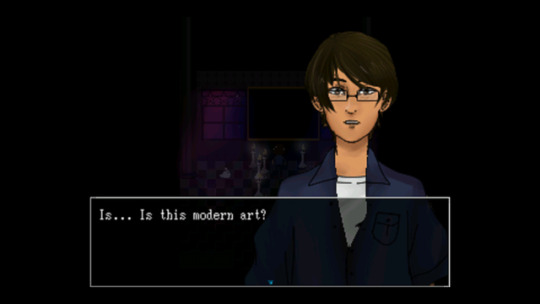
We mods would like to thank Rindre for agreeing to our interview! We believe that featuring the developer and their creative process is just as important as featuring the final product. Hopefully this Q&A segment has been an entertaining and insightful experience for everyone involved!
Remember to check out lux if you haven’t already! See you next month!
- Mods Gold & Platinum
#rpgmaker#rpg maker games#pixel games#indie game#lux#lux: dream girl#rindre#gotm#game of the month#november#games#demo#game#rpgm#rpgmaker 2003
149 notes
·
View notes
Text
WHO? WHAT? WHERE? WHY? HOW?
5 Questions you should ask anyone when they’re starting off a project made from the basis of ego and tenacity. I’m really not a particularly smart person, But I’m smart enough to know how dumb I really am.
I’ve always been itching to do this. Twitter was never a great way to display my thoughts and writing on grounds that by limiting characters your characters by tweet you’d either get into long threads of diatribes that likely no one will even read or you’d have to space out your thoughts and mince words in order to fit to these said limitations. Obviously it’s not a bad way per say to fully flesh out your thoughts but there’s obviously some downsides and you won’t be fully capable of fulfilling those quandaries, much so espousing on your thoughts and opinions to the fullest extent. I could write a book but I’m not knowledgeable enough feel like my thoughts are worth putting into a non-fiction book. I could join discord servers but I don’t know a wreath of people who even care. I could still talk off into the Twitter void but that’s only for short bursts at a time, any ideas or subjects I’d like to elucidate or spell out would just get lost, all my themes would shoot off into the negative space that is a twitter timeline regardless of if they’re worth revisiting or not.
But of course, would it even matter if people do care or they don’t. People live off making Youtube videos and content based on themselves because they assume people actually care about whatever benign thought or creative pursuit they’d have in their head. It’s not up to me to judge if my thoughts are worth putting out there but I guess the reason people use social media is to give a voice to the voiceless, have anyone out there a chance of their own success, But how does that affect content input though, How does impact your very own mental psyche. This is a conversation for another post and it’s far from a topic I’ll have any meaningful outlook on, just from my own experiences as an outsider looking in.
WHO?
I always fancied myself a writer more than an illustrator. The whole crux of my need to learn how to draw was from the idea that “hey no one wants to draw my webcomic ideas on something awful or whatever internet messaging board I was using at the time that’ll date this post when I look back on it when I’m 40, I’ll learn how to draw then and show everyone I can STILL MAKE IT” Then I started drawing and never really looked back. Within the few years or so since I’ve made that discovery I never really focused on my writing, much less my creative writing. I’ve had few instances where I’d try to light up my spark by blog posting was making other short lived wordpresses and blogspots where I can peruse and write for a short while until I get bored and go back to drawing everyday. Of course two particular things happened in which I’ve gotten that spark back, to an extent. 1. The corona virus quarantine happened and I was stuck with nothing to do, I dropped out of school to go to a new college out of country that hasn’t really happened yet and aside from my retail job I haven’t had a good outlet for where to put my creativity too. So I ended up just drawing more but also, reading off some books off my backlog. I’ve always been interested in philosophy and non-fiction since reading Kant and Hume at age 12 and Now rediscovered it because of quarantine. Really I’ve always been a better writer or story teller than anything else but efforts to light up that energy in me has been fruitful and I’ve relegated to being another artist in the pile of artists who’s only personality is that they “like art”. Which made me realized how much of a better self sufficient and self respecting the writer can be rather then the animator. Illustrations are fleeting, words stick with you. Of course greats work of art exist and will always exist. Beautiful paintings can grip me just as much as a good work of philosophy can, But lately beautiful paintings have been disgruntled and disavowed from public schema. If you want to provide good art for people to see, use hashtags and make fast fleeting content for people to consume easily and forget about. Such is the way of social media and how they grip you to keep using their products, It’s not a revolutionary idea but it’s a concept that ends up working. In a way I’d like to counteract this by making fast fleeting content but also putting in forth ideas and writings which I can consider good but we’ll see how that ends up panning out. My goals as an artist is for another topic entirely but really I need a way to practice my non-fiction writing skills and having a blog where I can just go on and on about pointless shit is good exercise. 2. I’ve stopped communicating to people that would point me to a direction in life I didn’t really need to go through and because of that I took a detour in my mental stability and mental development, really it wasn’t good for me. but because of that I was able to keep track of where I need to go and have removed all elements in my life that can allow me to find different paths and know where I’ll truly be. I could also just talk to people about these kinds of stuff but it’s hard to really find people who I can talk about the stuff I want to talk about with and nothing really beats writing a whole diatribe about whatever comes to your mind at the time. Why do I have a lot on my mind? You’ll hear that story in another time but it’s MOST likely an autism thing.
WHAT?
Look at section: Who again but to summarize and clarify what I mean. Content is fast fleeting and non-self actualizing, people don’t want ideas they want content, They need personalities to leech off and see themselves in instead of being creatives themselves. As someone who makes art and wants to make more art It’s hard to really judge if my art is worth it for the algorithm or if it’s worth it to bring in audience retention. Not to mention most people who use social media are kids, and the only way to grab kids attention is to play to their interests, play into their already corroded brains by playing onto their synapses, Not to imply I dislike it per say but more so that I feel that certain audience can somewhat affect your creative output.
WHERE?
I made a Medium account last month after reading an article on Luxury Communism. It was a fine article but what I got out of it was how good it seems to use Medium to communicate and write articles like these, Until I realized that really it can only be used for more academic pieces and while sure I’d like to do that one day something more lowkey and personal was what I really needed. Hence a tumblr, originally a blogging website before being used to oxidize internet discourse and internet creativity in general, was a perfect outlet for these kinds of posts. I’m actually used to using tumblr for one and can edit and know my way around doing these sorts of posts and the archive feature is good if I ever want to look back on old posts as opposed to Twitter. I can use the ask feauture to take requests or have feedback on my posts in a more concise manner. Unlike Medium or Wordpress I can easily hide certain posts or even the entire account if I wanted too and I won’t be seen or be recommended by the algorithm because I won’t even put tags on these posts. If you know where to find me you know where to find me. Although I do think I’ll make this public at some point I atleast need to know if I’ll even use this or if I’ll even keep making the same kinds of posts as I’d want too.
WHY?
I’ve already explained why you knucklehead, but I guess here were some of my inspirations to make a writing blog. I could list actual writers or twitter personalities or internet reviewers with blogs I can talk about, for example Yahtzee Crosshaw, Film Crit Hulk, Or even the elusive Andrew Hussie when he had a wordposts and while those people were instrumental to my development as a writer and artist I can’t say they were my full inspiration for making this.
Back in 2016, I was introduced to the Procrastinators’ Podcast by consuming Digibro content and having her podcast be linked at the end of one of her videos. I’ve since started concurrently watching her podcast and while I’ve always sucked into Digi’s cult of personality I’ve started appreciated her other friends in the podcast too, everyone except Nate. One of those members I gravitated too was MunchyWearsTinyHats. He was only one year older than me but I could still see myself in him and in effect appreciated him more than anyone in the podcast. We both seemingly grew up watching and reading the same shit, Homestuck, TF2, He introduced me to Nuclear Throne which because one of my favorite games and we both had the same appreciation for Hussie, Sam Hyde (sadly) Performance art, weird abstract art bullshit and of course My Little Pony. If I actually joined RFCK who knows what would’ve happened but that’s just my take. Of course a surface level description of Munchy aside, as someone who consumed everything he was in, I Lived my life vicariously through him and to all the members of the Procrastinators’ Podcast to an extent even though we both became completely different people as we reached our 20s. Currently he’s 20 and I’m less than a year away to being 20. But I feel as if our paths have drifted far enough that I can properly say I became a whole new different person to who I was in 2016. I still have appreciation for MLP, Homestuck and Minecraft and all the weird media shit me and him consumed. Back then I even modeled my art and persona to look like his too, It was a whole thing. Of course all of these posts and videos and personalities are very very out of date and they don’t reflect the content I consume or even the type of person I am now. I had a friend who also liked the PCP, well it was more like a love-hate relationship I feel but it was nice having someone who I could talk about the PCP with since at this time they were the only people or content creators I was consuming, what’s less said about current pcp the better. She’s always told me, I feel sorry for people who model their lives around these content creators and take advice from them since they clearly don’t know what they’re doing. And while I agree with her to an extent, I wouldn’t go as far as to discredit these artists accomplishments since they seem fulfilled with what they’ve made of themselves, not like we’re doing anything different or are any different to them. It’s about trying to live in a world with your own meaning in it and you can’t do that but disparaging the careers of grown men you don’t even know. Again topic for another day but I guess with this blog I’m always copying and ripping off some of their ideas for myself. In 2019, Munchy made a Tumblr where he’d detail and do the same thing and post blogs or writings he’s made or opinions he’s had, It hasn’t been updated in a year and a half but if it isn’t broke, don’t call the gas company asking for a refund. I even stole his alliteration with Shinsuke’s Soliloquy and Munchy’s Manuscripts, Shinsuke being my real God-given name. Of course the posts on his tumblr are really incredibly out of date and downright stupid and I’ll talk about them on their own on a seperate post since I feel like he really just didn’t know what he talked about and they’re baseline at best and wrong at worst. Regardless he still planted the seed of me as a person to make my own blog and talk about random bullshit.
HOW?
Obviously I will still tweet out stuff on my private twitter, Obviously I will still make art. Right now I’m making my own comics and writing a few short stories that maybe? I’ll put here I’m not really sure. Just depends on if they’re worthy on being posted since I’ll make a short story collection with them instead. Maybe I’ll continue the favorite character writing, maybe I’ll make my own picrew. We’ll see and no doubt these promises will become out of date in a week or two. Rather than the right of the moment malaise of tweeting around bullshit and sending it quickly I’ll use this for more concise text, something that I can sink my teeth in and tap away for what like 5 hours or so? Beats the essays i’d be doing but it doesn’t help that I am typing this in total silence, and I guess those essays will just be posted here. Do people post their school essays like they post their poems or their artwork for school? If you want to use my ask blog then it’s right there if you want a topic for me to talk about or just ask me a regular question. I’m bringing back tumblr asks to it’s real purpose. And of course, the only thing sure about me, is that nothings for sure.
0 notes
Text
vampire weekend in the post-rostam era

6/8/2019
A group of high school kids starting a rock band is a great American past time… especially for those kids cut from the baseball team, THE great American past time. The type of practice and commitment to collaboration it takes to become a good band or a good ball player is what makes both past times so appealing to the rest of us. It was the love of the songwriting process first. It was the smell of the fresh cut infield grass that got the particular individual in a single-minded mission in trying to turn the past time he chose into art. Famous songwriters and performers loved and obsessed over the music they were recording long before the record deal came the same way pro athletes dedicate their lives to training years before draft day.
That in itself, becoming successful at your chosen past time, turning it into art, and making a career out of it makes you all the more appealing to your inevitably growing fan base. Aside from giving their specific audiences an emotional release, the love also comes from the acknowledgement that none of what you had was inherited, it was earned from tireless hours seeking perfection way before any dollars rolled in. Sadly, most high school bands that scrape together money for studio time and college athletes who put it all on the line don’t ever come close to getting the recognition for their hard work. They certainly don’t get the money. This is not to say either activity is a waste of time. Almost everyone comes out the other end of a band or sports team a better person. Forming a band and being part of a team can build future collaborative skills that can positively affect the participant in numerous aspects of life…but the money and fame escape him.
Fortunately for some already privileged Columbia undergrads casually starting a band after a night of beer games turned into more than what any of them at the time could’ve imagined. Although true, it was clear from the very beginning that Vampire Weekend wasn’t just another band. Ezra Koenig, Rostam Batmanglij, Chris Tomson, and Chris Baio (excuse my oxford comma) made a name for themselves on the indie rock scene within 18 months of their inception. While some critics spent time whining about how much the band sounded like Paul Simon’s ‘Graceland,’ most heard it as I did. An indie record at heart with accessible pop ideas that weren’t carried by synths and predictable filler but rather tribal African drum rhythms, live instrumentation, and brilliant, witty wordplay. This was highlighted on A-Punk, a self-referential gem about New York City that ironically catapulted them to fame way out of the five boroughs. The two members of the band benefitting the most from the increased acclaim and exposure was Ezra Koenig, lead singer and lyricist and Rostam Batmanglij, who was the multi-instrumentalist often credited with being the brainchild behind the bands entire sound.
“Rostam and I are the two main songwriters” Ezra said in an interview early in the bands career. With Contra, the 2010 follow up to their self-titled debut that mythology continued to grow. The two of them became masters at employing subtle differences in their recording styles. Instead of using familiar echo sounds and various chamber effects that previously yielded glorious and simplistic pop harmonies, Rostam opted for a more digital sound. Contra did this while also staying true to the bands organic DIY style. From a critics standpoint this time around, it was more of a Talking Heads 80s experiment than a Paul Simon one. While Ezra remained a capable songwriter, he felt the liberty to have more fun with his vocal palette. On Contra, the band expanded the vocal possibilities. There was gibberish wailing on the standout track ‘White Sky’ and even distorted speed rap on the song ‘California English’; both came off as successful sonic endeavors. Rostam mixed Ezra’s vocals beautifully, knowing exactly when to let his feral tendencies run wild and when to harness them into gorgeous vocal textures. The winning team was making their pastime a thing of true art. A tandem now responsible for writing two of the most significant indie records of the new era. It seemed like a partnership that would yield classic tunes for years on end.
It initially seemed this way on the bands third LP Modern Vampires of the City. A level of maturation some detractors never thought the band could reach was on full display here. Rostam’s production (this time assisted by pop guru and future collaborator Ariel Rechtshaid) was darker and more experimental without losing a shred of accessibility. Ezra’s lyrics were far more introspective, dealing with themes of faith, mortality, and ‘Dying Young.’ The album features both ‘Step’ and ‘Hannah Hunt’ the two best songs the band has ever written. Overall it was a masterpiece. The band hit full stride; headlining major festivals, winning Grammy awards all while remaining true to their sound. They were able to solidify themselves as serious artists with a singular vision. No longer prep school boys who create decent music by taking the best pieces of their influences and mashing them together, this was the sound of a band in total control of their past time.
It went unsaid, but it was understood, and well deserved, that Vampire Weekend would be enjoying a hiatus after the success and laborious touring schedule surrounding Modern Vampires. Even so, after the Grammy, the critical acclaim, the incredible sales numbers, something totally unseen to the general public between the two main songwriters wasn’t right. To everyone’s surprise and utter bewilderment, Rostam decided to leave the band indefinitely.
“My identity as a songwriter + producer needs to stand on its own.” Read Rostam’s public statement. The news instantly polarized fans. Many, like myself, criticized Rostam for leaving a good thing, while coming off extremely pretentious and ungrateful. The man is lucky enough to be cooped up in the most successful songwriting duo in modern day rock music, why would he feel unfulfilled achieving greatness in the setting of a great band? Why must his work stand outside the efforts of collaboration? Who does he think he is?
It was known that Rostam, the multi instrumental production guru was always responsible for the sound of Vampire Weekend, while Ezra supplied the lyrics. The parting seemed amicable, but all in all it left the future of the band in a precarious situation. What was Vampire Weekend without Rostam? That very question went years unanswered.
In the years since Rostam left Vampire Weekend, he has had limited success finding any traction as a solo artist. His best effort thus far has been a collaborative record with Hamilton Leithauser of the Walkmen. A brilliant record full of the same elegant strings, organic drum sections, and blissful pianos that came to define the sound of his former band. Even so, it was still a behind the scenes production victory to add to his resume. Hamilton is excellent on that record, giving Rostam’s instrumentals a visceral feel with his raspy passionate hoarse vocal delivery.
As a front man himself, Rostam hasn’t achieved much. His debut album Half-Light, released in 2017 came and went without much of a peep from anyone. Indie circles overlooked it, it didn’t have a repeatable single, the vocals were shaky at best I gave it two listens and it passed it into the pile of albums that came and went without making a sound. Since then, Rostam has not been able to find his voice. Whether or not he can be an important voice in pop music remains to be seen, the talent behind the boards is there but it’s time for him to realize what he can and cannot do. It takes a necessary self-awareness to know one’s limitations in any job, in any past time. A contact hitter who plays his role by getting on base doesn’t swing for the fences. I believe Rostam’s ego and infatuation with being the front man took him away from his true self a bit.
Left alone in all this is Mr. Ezra Koenig. Years went on without a whisper of any new music and people started to wonder that same question: What is Vampire Weekend without Rostam? and more pressingly: Can Ezra write a Vampire Weekend album without him? Turns out, answer is both yes and no.
Enlisting in pop guru and Max Martin collaborator, Ezra and co. brought back Ariel Rechtshaid to give the band help in the production department. Ezra also used his smarts to understand the best way to go about marketing the new album. A record far more freewheeling than previous releases, Ezra became more eclectic than ever, and shared a plethora of wide-ranging singles way before the album was scheduled to drop.
The fourth album by Vampire Weekend, the 18-track record titled Father of the Bride was finally released May 3, 2019. Noted for its fusion of nonchalant broad-ranging grooves and witty pop songs about love, summer days, locking hate at the gate, and a few morbid things as well. Ariel creates a template of shade from the warming sun for Ezra to bask in and the results are often satisfying. While this new album won’t go down in history as an instant classic like its predecessor, it’s still hard to consider Father of the Bride to be anything but a monumental success. Quality songs exist all throughout this thing and contain some of Ezra’s best songs yet. An arena tour on the way, good new songs to play, and first week sales eclipsing 140k. Say what you want about sales in today’s musical landscape, it’s impressive when a group of guys who still primarily play guitars can sell 140k first week. It’s special. You would have a hard time listing bands that released their debut record after 2000 than can sell over 100k first week and sell out Madison Square Garden. What Vampire Weekend has is special.
I’m predicting FOTB to be a summer 19’ novelty. I’ve already heard cuts out on the streets of Asbury Park NJ, backyard cookouts, and New York City bars alike. Can jam, car rides with the windows down, and poolside convos, Father of the Bride is a free-wheeling summer record that also has a thing or two you can learn from.
It’s a wonder to me, knowing what he knows now, if Rostam would make the same decision all over again. Joining a band is an American past time. Playing in a band that influences the masses on a grand stage is special and should be cherished and appreciated as such. Leaving such a beautiful situation seems egotistical. It may not be the case here, but it is the perception. Ezra has proved himself to be just fine without him. Rostam has time to blossom. He is still young and has shown shades of greatness (the production on Frank Ocean’s Ivy is otherworldly) but that once again, is a highlight in music production-something behind the scenes. Rostam, if you have a voice worth hearing, now is the time.
0 notes
Text
No Rostam, no problem? Vampire Weekend in the post-Rostam era

A group of high school kids starting a rock band is a great American past time. Especially for those kids cut from the baseball team, THE great American past time. The type of practice and commitment to collaboration it takes to become a good band or a good ball player is what makes both past times so appealing to the rest of us. It was the love of the songwriting process first. It was the smell of the fresh cut infield grass that got the particular individual in a single minded mission in trying to turn the past time he chose into art. Famous songwriters and performers loved and obsessed over the music they were recording long before the record deal came the same way pro athletes dedicate their lives to training years before draft day. That in itself, becoming successful at your chosen past time, turning it into art, and making a career out of it makes you all the more appealing to your inevitably growing fan base. Aside from giving their specific audiences an emotional release, the love also comes from the acknowledgement that none of what you had was inherited, it was earned from tireless hours seeking perfection way before any dollars rolled in. Sadly, most high school bands that scrape together money for studio time and college athletes who put it all on the line don’t ever come close to getting the recognition for their hard work. They certainly don’t get the money. This is not to say either activity is a waste of time. Almost everyone comes out the other end of a band or sports team a better person. Forming a band and being part of a team can build future team skills that can positively affect the participant in numerous aspects of life...but the money and fame escape him.
Fortunately for some already privileged Ivy League Scholars from New York the band casually started at a Columbia party turned into more than anyone could imagine on that alcohol fueled evening. Ezra Koenig, Rostam Batmanglij, Chris Tomson, and Chris Baio formed Vampire Weekend. (Excuse my oxford comma). From the very beginning it was clear that Vampire Weekend wasn’t just another band. Within 18 months of their inception, Vampire Weekend made a name for themselves on the indie scene. While some critics spent time whining about how much the band sounded like Paul Simon’s Graceland, most heard it as I did. An indie record at heart with accessible pop ideas that weren’t carried by synths and predictable filler but rather tribal African drum rhythms, live instrumentation, and brilliant, witty, self deprecating wordplay. This was highlighted on A-Punk, a self-referenial gem about New York City that ironically catapulted them to international stardom. The two members of the band benefitting the most from the increased acclaim and exposure was Ezra Koenig, lead singer and lyricist and Rostam Batmanglij, who was the multi-instrumentalist often credited with being the brainchild behind the bands entire sound.
“Rostam and I are the two main songwriters” Ezra said in an interview early in the bands career. With Contra, the 2010 follow up to their self titled debut that mythology continued to grow. The two of them became masters at employing subtle differences in their recording styles. Instead of using familiar echo sounds and various chamber effects that previously yielded glorious and simplistic pop harmonies, Rostam opted for a more digital sound. Contra did this while also staying true to the bands organic DIY style. From a critics standpoint this time around, it was more of a Talking Heads 80s experiment than a Paul Simon one. While Ezra remained a capable songwriter, he felt the liberty to have more fun with his vocal palette. On Contra, the band expanded the vocal possibilities. There was gibberish wailing on the standout track ‘White Sky’ and even distorted speed rap on the song ‘California English’; both came off as successful sonic endeavors. Rostam mixed Ezra’s vocals beautifully, knowing exactly when to let his feral tendencies run wild and when to harness them into gorgeous vocal textures. The winning team was making their pastime a thing of true art. A tandem now responsible for writing two of the most significant indie records of the new era. It seemed like a partnership that would yield classic tunes for years on end.
It initially seemed this way on the bands third LP Modern Vampires of the City. A level of maturation some detractors never thought the band could reach was on full display on MVOC. Rostam’s production (this time assisted by pop guru and future collaborator Ariel Rechtshaid) was darker and more experimental without losing a shred of accessibility. Ezra’s lyrics were far more introspective, dealing with themes of faith, mortality, and Dying Young. ‘Ya Hey’ is still the most ambitious undertaking of the bands career. Coming off as an eerie baroque pop anthem marching its way through a catchy uneven time signature with huge heart and a singalong melody made the song a special moment in the storied bands catalog. ‘Unbelievers’ is another one. One the surface the song seems like your average guitar pop bop but Ezra’s lyrics about mortality and the seriousness behind it add an appropriate darkness that gives an upbeat song a human feel. A feeling amplified and perfected on Hannah Hunt and Step. The two best tracks in the bands discography. The band hit full stride. Headlined major festivals. Won a Grammy. All while remaining true to their sound they were able to solidify themselves as serious artists with a singular vision. No longer prep school boys who create decent music by taking the best pieces of their influences and mashing them together, this was the sound of a band in total control of their past time.
It went unsaid, but it was understood, and well deserved, that Vampire Weekend would be enjoying a hiatus after the success and laborious touring schedule surrounding Modern Vampires. Even so, after the Grammy, the critical acclaim, the incredible sales numbers, something between the two main songwriters wasn’t right. So even though the latest release solidified the bands immediate legacy Rostam decided to leave the band indefinitely.
“My identity as a songwriter + producer needs to stand on its own.” Read Rostam’s public statement. The news instantly polarized fans. Many, like myself, criticized Rostam for leaving a good thing, while coming off extremely pretentious and ungrateful. The man is lucky enough to be cooped up in the most successful songwriting duo in modern day rock music, why would he feel unfulfilled achieving greatness in the setting of a great band? Why must his work stand outside the efforts of collaboration? Who does he think he is?
It was known that Rostam, the multi instrumental production guru was always responsible for the sound of Vampire Weekend, while Ezra supplied the lyrics. The parting seemed amicable, but all in all it left the future of the band in a precarious situation. What was Vampire Weekend without Rostam? That very question went years unanswered.
But in the years since Rostam left Vampire Weekend, he has had limited success in finding any traction as a solo artist. His best effort thus far has been a collaborative record with Hamilton Leithauser of the Walkmen. A brilliant record full of the same elegant strings, organic drum sections, and blissful pianos that were similar to the ones that came to define the sound of Vampire Weekend. Even so, it was still a behind the scenes production victory to add to his resume. As a front man, Rostam hasn’t achieved the same success. His debut album Half-Light, released in 2017 came and went without much of a peep from anyone. Indie circles overlooked it, it didn’t have a repeatable single, the vocals were shaky at best, and it passed before the world knew it existed. I think even I only gave it one listen. Since then, Rostam has not been able to find his voice. Whether or not he can be an important voice in pop music remains to be seen, the talent behind the boards is there but it’s time for him to realize what he can and cannot do. It takes a necessary self awareness to know ones limitations in any job, in any past time. A contact hitter who plays his role by getting on base doesn’t swing for the fences. I believe Rostam’s ego and infatuation with being the front man took him away from his true self a bit.
As Rostam struggled to find footing without the band, and as the years went on it seemed like Ezra was in the same boat. Years went on without a whisper of any new music and people started to wonder that same question: What is Vampire Weekend without Ezra? and more pressingly: Can Ezra write a Vampire Weekend album without him? The answer is both yes and no.
Enlisting in pop guru and Max Martin collaborator, Ezra and co. brought back Ariel Rechtshaid to give the band help in the production department. Ezra also used his smarts to understand the best way to go about marketing the new album. A record far more freewheeling than previous releases, Ezra became more eclectic than ever, and shared a plethora of wide-ranging singles way before the album was scheduled to drop.
The 18 track record is noted for its fusion of nonchalant broad-ranging grooves and witty pop songs about love, summer days, locking hate at the gate, and a few morbid things as well. Ariel creates a template of sunshine for Ezra to shine under, and the results are often satisfying. While this new album won’t go down in history as an instant classic like its predecessor, it’s still hard to consider Father of the Bride to be anything but a monumental success. Quality songs exist all through this thing that contain some of Ezra’s best wordplay. An arena tour on the way, good new songs to play, and first week sales eclipsing 140k. Say what you want about sales in today’s musical landscape, it’s impressive when a group of guys who still play guitars can sell 140k first week. It’s special. You would have a hard time listing bands that released their debut record after 2000 than can sell over 100k first week and sell out Madison Square Garden. What Vampire Weekend has is special.
Father of the Bride is the soundtrack to many good summer nights. I’ve already heard cuts out on the streets of Asbury Park NJ, backyard cookouts, and New York City bars alike. Can jam, car rides with the windows down, and poolside convos, Father of the Bride is a jubilant summer record that also has a thing or two you can learn from.
It’s a wonder to me, knowing what he knows now, if Rostam would make the same decision all over again. Joining a band is an American past time. Playing in a band that influences the masses on a grand stage is special and should be cherished and appreciated as such. Leaving such a beautiful situation seems hard to believe. Ezra has proved himself to be just fine without him. Rostam has time to blossom. He is still young and has shown shades of greatness (the production on Frank Ocean’s Ivy is otherworldly) but that once again, is a highlight in music production. Rostam, if you have a voice worth hearing, now is the time.
0 notes
Text
The alchemical power of college-sponsored wine: Arts Week 2017, half-remembered.
Arts Week came upon us in the third week of Trinity 2017, glittering and glistening through our college colours of black and gold to reveal itself through this year’s theme of Alchemy.
Whilst maybe a little loosely connected in places (is pole dancing alchemical? It’s certainly a form of magic to watch students stiff from the library attempt to haul their limbs into something resembling elegance) the general theme of transformation and states of change was an apt one for a year that could be described as nothing short of tumultuous.
It was also perhaps fitting seeing as Arts Week this year fell the day after the biennial Brasenose Ball, and thus required a great deal of shape shifting from sleepy attendees to muster the arm strength to put together a new stage in the remnants of the Ball’s ruins.
Fittingly, Monday started with a very gentle bang as Tian, a third year artist, ran a workshop on the art of Qigong (literally: "Life Energy Cultivation") - a remarkably well attended workshop given that most attendees had had a grand total of 5 hours sleep all weekend in the aftermath of the Ball. Morning workshops continued all week - from life drawing to bark horn crash courses to gold leafing and even the appearance of a VIP guest.
Life drawing took place on Tuesday morning, with a twist. The twist in this case came in the form of the long muscular bodies of the models - and their many thousand legs. The chance to draw millipedes and snakes (real snakes, not the kind that always steal your milk and never wait for you in the Hall queue) drew a crowd keen to get up close. Masterpieces were made, with biologists turning out in droves to correctly identify the muscular sections and also correct my erroneous assumption that millipedes have a thousand legs.
I had tricked scientists into drawing, and thus alchemy was underway.
Wednesday morning heralded the arrival of the mysterious “Celtic Chris” as he descended upon us with multiple horns and flutes in tow, carved by his own hands and foraged from woodland. Nobody knew quite what to expect from the ‘bark horns’ he promised: horns that barked? Horns from sheep? Celtic Chris played some lovely melodies on a carved instrument that raised hopes for everyone’s own creative endeavours.
Unfortunately it so happened that this instrument was not a bark horn, nor even close to it in output.
As it turned out, the process involved a great deal of scraping and twisting of sticks, with the end result being strangely, if not intentionally, reminiscent of a dog barking. Or at least that’s how it sounded when played by me. These howls rang out across the quad for the afternoon, goading those who had sworn to be distracted by neither art nor sunshine out of their study lairs - then forcing them back in when it appeared that people would not cease in attempting to achieve the elusive singular note that the horn could allegedly produce.
One such horn, rumoured to be Sam Quinn’s, was left overnight and discovered to much delight the next morning at the gold leafing workshop. It reemerged far shinier and possibly less usable, alongside a variety of glimmering items such as lighters, water bottles, glasses and even a laptop. The theme of “Alchemy” that the week loosely abided to was truly in action, as objects went from practical to gold but glued shut; a small price to pay for glamour.
Friday’s morning workshop brought with it more star power than those shiny leaves and the celebrity draw of Celtic Chris combined: the author of Maisy Mouse, Lucy Cousins. Everyone learnt how to recreate the iconic character and how you might draw subfusc on cartoon animals with no arms. The final product was a painting as wide as Lecture Room XI. Whilst it currently lies dormant in the JCR, there have been rumours of getting Joe Organ to incorporate it into Open Days to show just how talented Brasenose students can be when armed with only a kids paintbrush, a mild hangover and a determination to remember what colours go into a cartoon peacock’s tail.
In the afternoons, events ranged from a capella (so much a capella) to plays and pole dancing, with great excitement arriving midweek with the appearance of a BBC One camera crew in college. The news started to spread in both whispers and college-wide emails, prompting the appearance of the entire development office in Deer Quad to watch Brasenose’s own Daniele and Hiba do some beautifully spontaneous leaps from the chapel stairs for the sixth time that morning.
After a tense start involving a well timed exchange of boxes containing furry spiders to those with film equipment occurring on Old Parlour staircase (see “Life” Drawing, above), the Alternotives took to the stage.
Whilst the eventual screen time of Old Library and Deer Quad was limited due to them only lasting one episode on Pitch Battle, the memory of John Bowers (QC) sat cross legged at the front of the marquee, entranced by a capella, will remain in our hearts forever.
Not to be overshadowed by the glitz and glamour of a BBC camera, we also had noted Oxford groups the Gargoyles and The Oxford Belles - whilst it seems like every group seems to claim the role as Oxford’s original all-singing, some-dancing troupe, the Belles at least had star power in the way of internet reach, with noted fan Ashton Kutcher sadly declining to turn up on the day despite his Facebook post-based enthusiasm. We’ve all been there, Ashton.
We also had not one but two plays running this year: one imagining the late and great William Shakespeare in the context of fresher’s week as a mechanical engineering student disillusioned with both flirting and the sciences, and a dynamic rehearsed reading of Pygmalion.
Dynamic in that it was meant to be a traditional reading that somehow wandered off the rails and all the way up the staircase 10 at one point.
Both were enthusiastically received by large crowds composed of friends and family members and even some paying guests, and feedback on both was great, with one very anonymous audience member remarking that Cal Demby-Harris pulled off the red officer’s jacket better than anyone else in college. He is, thus far, the only person in college to have worn this garment.
On Friday afternoon, following the debut of Pygmalion on the quad, Medieval Kitchen was transformed with poles and hoops for what was technically our most popular event of the week - according to Facebook’s algorithms. “Pole Dancing Workshop” reached 45k people on Facebook, something Brasenose Arts would love to claim as representative of the average enthusiasm for the week but unfortunately should probably note down as due to an irresistibly amusing combination of Oxford’s hallowed halls and the Wikihow-esque illustration on the cover photo, amplified by the Facebook reach of our treasured Stanford exchange students and their friends in Palo Alto.
As it happens, a solid 20 or so people attended each session, and it was a sight to behold to see students hanging from the beams of MK (or rather, suspended close to - I can confidently assure you that no actual climbing of the architecture occurred in case you are reading this, Matt Hill Domestic Bursar).
Following the excitement of our viral success story on Friday afternoon was the Arts Week Formal, an event eerily free of senior staff, which meant that the gavel ended up in my not entirely capable hands.
Whilst I can’t vouch for much of what I said, it has been reported that I gave a speech - all I can recall is that the food was wonderful and I was probably a rather soppy and exhausted shell of a human by this point. I can also recall that the Northern Soul night that followed the dinner was a roaring success. Playing off of Brasenose’s fondness for ceilidhs, and retaining the joy and mandated dancing of a ceilidh but with a name one can spell without googling, the night involved much moving of tables and some unexpected cameos from a porter or two. Again, Matt Hill, if you see any photos where we appear to be standing on tables, it is merely an illusion and we are in fact levitating from the sheer fun of it all.
Saturday morning was naturally a quieter affair, with the final performance of ‘Willy Shakes’ taking centre stage both on the quad and in the timetable. In the afternoon came a panel on Inequality in Film, boasting speakers from the BFI, Girls in Film and Another Gaze Journal as well as Jendella, an independent filmmaker and photographer.
Following the panel, after deliberation between Brasenose’s thriving and warring FilmSocs, came an open air screening of Baz Luhrmann’s Romeo and Juliet. The air was warm with the promise of the great summer heatwave yet to come, and the fairy lights we had swiped from the wreckage of the ball and haphazardly strung across the marquee’s frameworks glimmered in reflection with the candles of the film. 3DIMAX eat your heart out.
The next morning the early summer sun rose on the same marquee, only slightly dampened by overnight showers that cleared to a blazing brightness by the time the annual celebration of Jazz on The Quad dawned. Our Music Rep and Organ Scholar, the multitalented Sarah Hughes, had managed to gather us together an impromptu band from her bursting contacts list. As they played, strawberries and (maybe a little too much) Pimms were handed round liberally, leaving everyone in a fruit flavoured midday daze to round off the week.
The fact that we had well and truly trampled the quad to pieces and broken several pieces of expensive IT equipment is merely a blip among these heady memories, and one I feel no fear in admitting here, as I know a certain IT rep never reads my notices to the end, regardless of content. Sweet, guiltless bliss.
0 notes
Text
(Note: voting closes in a bit more than ten days from now on 7/21/19. Membership sales (required for voting rights in most cases) also close soon. Visit the Dublin in 2019 website for more information.)
This being a Monday, and Mondays being slow, I figured it was about time to share my 2019 Hugo Awards Finalist Ballot, which ballot will be used to help tally the vote for the 2019 Hugo Awards, which will be presented – for the first time ever – in my ancestral lands of Ireland.
(Start at 30 seconds in; the important part comes at 54 seconds)
Sadly, I will not be in attendance, but I am a supporting member and therefore, get to vote.
Below are screen captures of the individual categories and my placements (the Hugo Awards use a preferential voting system where you rank your picks).
The Retro Hugo Awards follow the contemporary Hugo Awards.
Some general comments: I don’t vote for works I’m not personally familiar with, which happens for one reason and another; I also don’t consider reading an excerpt from a longer work to be sufficient exposure to judge it properly.
This also means that I don’t necessarily rank everything in a category.
There are a handful of categories I didn’t vote in or opted to select No Award for – excercising my Ghu-given right to “vote” by not selecting anyone or picking No Award to indicate that I disagree with the inclusion of the category in the awards.
This is not pique over disagreeing with a categorie’s inclusion when I campaigned against its inclusion but lost the vote. It’s actually three reactions: 1. I really don’t think that it should be an award category, find it problematic for various reasons and see it as more (eventual) trouble than it is worth – which gets a “No Award”; 2. I disagree with the category but don’t care enough – or think it harmful enough – to bother with it and 3. I’ve no interest in the category and therefore can’t vote because I really don’t engage with it. Let those who do decide who should win without interference from me.
Note: the screencaps are a bit difficult to read, so the email summary of my ballot is included after them. I’m showing the screen caps first because the summary only includes those Finalists that I actually voted for.
#gallery-0-9 { margin: auto; } #gallery-0-9 .gallery-item { float: left; margin-top: 10px; text-align: center; width: 100%; } #gallery-0-9 img { border: 2px solid #cfcfcf; } #gallery-0-9 .gallery-caption { margin-left: 0; } /* see gallery_shortcode() in wp-includes/media.php */
This category, over time I think, is going to cause problems, what with the possibility that a “series” can find itself up for the award in multiple years; not to mention some possible entrants getting short shrift because of availability & etc.
Hoo boy. I completely disagree with the Administrators on the eligibility of Archive of Our Own – not because it showcases “fan fic”, but because it is not a “new” work and has not been updated sufficiently broadly enough to be eligible. Making a website that updated some back-end capabilities eligible is like making The Moon is a Harsh Mistress eligibile again because they changed the type font in a new edition. Further, I am deeply concerned about A: AO3’s members deliberately misconstruing their individual status AND B. even more concerned about large internet “tribes” being able to sway the vote and using their numbers and reach to possibly negate the regular membership’s vote*. And, finally, this category needs to be refined in future to refocus it on academic and critical work within the field.
As stated earlier, if I don’t engage, I don’t vote – but, while I have mild reservations about this category’s inclusion, they’re not strong enough to want to deny others their fun.
It’s really, really difficult to figure out who did what in this category. I believe that editorial work should be awarded, I just think we need a better way to do it. What that might be, I’ve no idea,. so, therefore, I stay mum.
Another category whose inclusion I heartily disagree with. I am PERSONALLY far better off because when I began reading science fiction, there were no distinctions made over what was or was not appropriate for me to read. I believe this is an artificial, marketing-based divide, is detrimental to young readers by suggesting limitations and that we should not be basing awards on marketing categories.
*I’ve been vocal on the AO3 “controversy”. Early on I asked that they detail the “sufficient” changes made to the site that would make it eligible in a year in which it was not first produced. (In fact, I think its TEN years AFTER it was first created that we are being asked to vote for it. As if The Martian appeared on the ballot AFTER the film rolled out, in a year in which the novel itself was not first published in English.)
I am not objecting to “new voters” coming into the fold here. We absolutely want that. What I am finding issue with is an internet community that does not normally engage with the awards doing so to get their “thing” a win. Just like the gamer gaters that were recruited by the Sad and Rabid puppies. (No, they are not pups; some of their actions are ‘puppy-like’.)
If this kind of thing becomes common (and I suspect it may), the awards turn into a defacto “popularity” contest: how many people who never heard of the Hugo Awards before can we get to vote because their “friends” are up for an award?
But putting that argument aside for a moment: the public display on the part of AO3 members (yay, all of my fan fic works are now Hugo Nominees: I’m a Hugo Finalist author – gonna put that right up on my website!) AFTER being informed that they are not entitled to such honors individually, is, to me, more than enough reason to not vote for it.
Prior coverage of this debate here
Finalist Vote Summary:
Novel:
The Calculating Stars
Trail of Lightning
Space Opera
Novella:
Artificial Condition
The Tea Master and the Detective
Binti: The Night Masquerade
Novelette:
“The Thing About Ghost Stories”
The Only Harmless Great Thing
Short Story:
“The Tale of the Three Beautiful Raptor Sisters, and the Prince Who Was Made of Meat”
“The Court Magician”
“The Secret Lives of the Nine Negro Teeth of George Washington”
Related Work:
Astounding: John W. Campbell, Isaac Asimov, Robert A. Heinlein, L. Ron Hubbard, and the Golden Age of Science Fiction
An Informal History of the Hugos: A Personal Look Back at the Hugo Awards
Ursula K. Le Guin: Conversations on Writing
http://www.mexicanxinitiative.com: The Mexicanx Initiative Experience at Worldcon 76
The Hobbit Duology (documentary in three parts)
No award
Dramatic Long:
Spider-Man: Into the Spider-Verse
Sorry to Bother You
Black Panther
Avengers: Infinity War
Annihilation
A Quiet Place
Dramatic Short:
The Good Place: “Janet(s)”
The Good Place: “Jeremy Bearimy”
Editor Short:
Gardner Dozois
Neil Clarke
Semiprozine:
Strange Horizons
FIYAH Magazine of Black Speculative Fiction
Fireside Magazine
Beneath Ceaseless Skies
Uncanny Magazine
Shimmer
Fanzine:
Rocket Stack Rank
Galactic Journey
Journey Planet
nerds of a feather, flock together
Fan Writer:
Foz Meadows
James Davis Nicoll
Alasdair Stuart
Fan Artist:
Spring Schoenhuth
Series:
No award
New Writer:
Jeannette Ng
Lodestar:
No award
The Retro Hugo Awards
(The older I get, the closer the Retros come to being THE Hugo Awards….)
Yes, seems that this year I have a ‘thing’ for Don Wollheim, Eric Frank Russell and C. L. Moore.
(Pretty sure I’ve always had a thing for them.)
Symbiotica (EF Russell) makes me laugh. Every. Single. Time. I think it takes the prize for most vomitous novelette in the history of the genre (though Sturgeon’s The Girl Had Guts comes a very close second). And by vomitous, I don’t mean on the part of the reader. I mean, more people vomit in that story than in any other.
#gallery-0-10 { margin: auto; } #gallery-0-10 .gallery-item { float: left; margin-top: 10px; text-align: center; width: 100%; } #gallery-0-10 img { border: 2px solid #cfcfcf; } #gallery-0-10 .gallery-caption { margin-left: 0; } /* see gallery_shortcode() in wp-includes/media.php */
Summary
Retro Novel:
Conjure Wife
Earth’s Last Citadel
The Weapon Makers
Gather, Darkness!
Perelandra
Retro Novella:
“Attitude”
“Clash by Night”
The Little Prince
“We Print the Truth”
Retro Novelette:
“Symbiotica”
“Mimsy Were the Borogoves”
“The Proud Robot”
“Citadel of Lost Ships”
“The Halfling”
Retro Short Story:
“Q.U.R.”
“Yours Truly – Jack the Ripper”
“Doorway into Time”
“King of the Gray Spaces” (“R is for Rocket”)
“Death Sentence”
Retro Graphic Story:
Flash Gordon: Fiery Desert of Mongo
Buck Rogers: Martians Invade Jupiter
Wonder Woman #5: Battle for Womanhood
Retro Dramatic Long:
Phantom of the Opera
Münchhausen
Heaven Can Wait
Batman
Retro Dramatic Short:
Super-Rabbit
Frankenstein Meets the Wolfman
The Ape Man
Der Fuehrer’s Face
Retro Editor Short:
Donald A. Wollheim
Mary Gnaedinger
Dorothy McIlwraith
John W. Campbell
Raymond A. Palmer
Retro Pro Artist:
Margaret Brundage
Hannes Bok
J. Allen St. John
Virgil Finlay
Antoine de Saint-Exupéry
William Timmins
Retro Fanzine:
The Phantagraph
Le Zombie
Futurian War Digest
Guteto
Voice of the Imagi-Nation
Retro Fan Writer:
Jack Speer
Morojo (Myrtle Douglas)
Wilson “Bob” Tucker
Donald A. Wollheim
Forrest J. Ackerman
Art Widner
The 2019 Hugo Awards – Publisher’s Picks (Note: voting closes in a bit more than ten days from now on 7/21/19. Membership sales (required for voting rights in most cases) also close soon.
0 notes
Text
New Post has been published on Fazeup
New Post has been published on https://www.fazeup.tk/2019/05/getting-began-with-spotify-in-india/
Getting began with Spotify in India
Spotify lastly launched its music streaming service in India in February 2019, after quite a few stops and begins and regardless of a authorized battle with Warner Music Group that rages on even at this time (extra on this later). Indian audiences had been actually clamoring for the globally widespread app, provided that Spotify in India surpassed one million installs in lower than per week. In case you’re but to make the leap, or think about for those who even ought to, right here’s all the pieces you must find out about Spotify in India!
Getting began with Spotify in India
Creating an account
You possibly can obtain the Android app from the Google Play Retailer. Spotify can be obtainable on iOS, on Home windows (additionally through the Microsoft Retailer), and on the net. You possibly can join free with an e-mail tackle or log in with Fb. Utilizing the Fb choice makes it a lot simpler to share your Spotify playlists, what you’re listening to, and different suggestions with family and friends.
In fact, you may management precisely what and the way a lot info you wish to share, if any. If you wish to keep away from it utterly although, signing up with an e-mail tackle would be the higher approach to go. With the e-mail tackle signup, you have to to confirm the account. Offering your date of beginning, gender and including a profile title completes the account creation course of.
Including your music preferences
As soon as your account is ready up, you’ll have the ability to choose the languages you favor – this consists of English, Hindi, Punjabi, Tamil, Telugu, Malayalam, Marathi, Gujurati, Kannada, and Bengali. This would possibly look like quite a bit, however rivals like JioSaavn and Wynk Music add one other 5 regional languages to their portfolios, so Spotify India has some catching as much as do right here.
You now get to pick your favourite artists. There’s a minimal of three, however the extra you choose, the extra well-rounded the each day combine playlists will likely be proper off the bat. Tapping on the title of a singer brings up extra choices (like music administrators or feminine singers they’ve labored with). This was truly a extremely enjoyable factor to do, mentioning previous favorites that I wouldn’t have thought off straight away. You can even discover artists primarily based on style.
After deciding on not less than three artists, the Spotify app homepage opens. Based mostly in your earlier alternatives, not less than one “Daily Mix” will robotically be created for you. Scrolling additional down will present extra album suggestions, trending songs, editors’ picks, new releases, and an entire lot extra. In case you’re hoping to get listening straight away, Spotify has greater than bought it lined.
The settings menu
Faucet on the gear icon on the prime proper nook of the house web page to enter the settings menu. You possibly can disable or allow a knowledge saver mode, add a crossfade, permit express content material, normalize the quantity, set audio high quality, replace your language selections, set your social media preferences, and an entire lot extra. There are a bunch of settings right here that may allow you to cater the app expertise to precisely the way you prefer it.
Curating your music and podcasts
Including songs, playlists, and podcasts to Your Library
As nice as it’s to have random, however effectively put collectively playlists created for you, you’ll nonetheless wish to create your individual to get probably the most out of the music streaming service. To search out particular songs, artists, or podcasts, hop on over to the Search tab on the backside of the app web page. Simply begin typing a reputation, and what you’re searching for ought to pop up within the search outcomes.
In case you aren’t specific, you can even undergo quite a lot of beneficial playlists primarily based on style, language, period, temper, and even the season. In case you like a particular playlist, or perhaps a few songs from one, you may add them to your library by tapping on the guts icon subsequent to the title of the music or the playlist.
The identical goes for podcasts as effectively. You possibly can seek for a particular podcast or scroll down within the search web page to podcast part. You’ll have a variety of podcast suggestions primarily based on quite a lot of classes or you may simply look via the highest charts. As soon as once more, if there’s one you want, it can save you it to the library by tapping on the guts icon on the prime proper nook of the web page.
If you’re listening to a Spotify-created playlist and like what’s on, you can even save the whole playlist or add particular songs to your favorites by tapping on the guts icon. On the flip aspect, for those who don’t like a selected music, you may faucet on the cease signal (subsequent to the guts icon) to cover the music. Tapping on the three vertical dots icon provides you much more choices, together with including the music to a playlist, including it to queue, viewing artist info, and sharing the music.
Your Library
Your Library is the place you’ll discover the playlists and albums you’ve like and your favourite artists. Any songs you’ve appreciated will likely be within the “Liked Songs” playlist. Change to the Podcasts tab to seek out your favourite reveals, latest episodes, and downloads. Sure, when you’ll want the premium subscription to obtain and take heed to music offline, there’s no such restriction with podcasts, which is unbelievable.
In fact, you don’t have to go away all of it as much as Spotify and you’ll create your individual playlists. First, give the playlist a reputation. Then faucet on the big “Add Songs” button to get began. Spotify contributes right here as effectively with lengthy lists of recommendations which can be curated out of your favorites and up to date listening habits. You can even seek for a particular music or go the “Songs you liked” part so as to add them. Faucet on the plus/add icon. You’ll now discover your newly created playlist within the library.
Listening on different gadgets
You’ve your playlists prepared and podcasts queued, however what for those who don’t wish to take heed to them in your cellphone? The excellent news is that Spotify isn’t restricted to at least one gadget and you should use the cell app as a distant to regulate music playback on one other platform. When listening to a music, you’ll discover a small show and speaker icon on the backside left of the display screen. This opens the “Connect to a device” web page that may allow you to management any music enjoying in your pc or TV, or via a Wi-Fi speaker. Faucet on an choice and comply with the on-screen directions.
The Spotify India catalog
Spotify is taken into account probably the greatest music streaming providers throughout the globe, partially as a result of unimaginable catalog it has to supply. Sadly, Spotify’s launch in India was removed from easy due to an ongoing authorized battle with Warner Music Group. English music from a protracted record of world superstars is unfortunately not obtainable on Spotify India in the meanwhile and this can solely finish when the difficulty with the licensing deal has been resolved.
Need to take heed to Charlie Puth, Ed Sheeran, Linkin Park, or Coldplay or the host of different artists who signed with WMG? You’re higher off holding on to a different music streaming service for now.
Spotify’s bother with licensing offers doesn’t finish with WMG. The corporate has additionally been pressured to take away over 120,000 Hindi and regional language songs due to an settlement not being reached with SaReGaMa India Ltd, a serious report label in India.
It’s not all gloom and doom although. There are nonetheless fairly a couple of licensing offers that Spotify has managed to get with Indian and worldwide report labels, so the catalog is much from a barren wasteland. One among Spotify’s strongest fits has been its suggestions, and it stays a good way to find new artists and beforehand unheard songs. In fact, there’s a variety of widespread music obtainable as effectively.
There’s even some music that I haven’t been capable of finding on some other Spotify competing apps, like a 2006 Karsh Kale album that I used to be solely capable of finding on Spotify and YouTube Music.
The very best half for me is the provision of podcasts on the app. Granted, I’ve by no means thought it was an enormous deal to modify between my music streaming and podcast apps. It’s nonetheless good to have all the pieces in a single place although. I can also’t attest to how full Spotify’s podcast catalog is right here, however I discovered all the pieces that I take heed to.
Spotify Free vs Spotify Premium
The free model of Spotify in India is much much less restricted than it’s within the U.S., the U.Ok, and others. For instance, whereas the cell app solely enables you to use Shuffle Play in different markets, that isn’t the case right here. You additionally don’t have to fret about monitor skipping limits, not having the ability to play any monitor or create customized playlists. The truth is, you’ve full entry to the whole catalog that’s obtainable in India on the cell app with the free tier.
There are advertisements to cope with in fact, however having a 30-second advert play after each six songs and the occasional popup that asks you to subscribe to the premium service isn’t intrusive or annoying by any means.
That stated, there’s nonetheless sufficient of a bonus to going premium or there wouldn’t be any level to having the choice. For starters, advertisements go away utterly. Audio high quality additionally will get a lift to 320kbps from the usual 160kbps (prime quality) and 96kbps (regular high quality). Streaming with increased high quality audio would require extra knowledge, nevertheless it isn’t as a lot of a knowledge hog as you’d assume, and knowledge caps aren’t as a lot of a priority anymore.
Spotify Premium costs fall according to the subscription charges of competing music streaming providers in India for probably the most half. It might appear a contact dearer than some, however that’s as a result of providers like JioSaavn have drastically lower their costs as a response to the arrival of Spotify and YouTube Music this yr. Spotify additionally presents numerous pay as you go plans that include long-term reductions and also you additionally get to reap the benefits of a 30-day free trial.
Spotify costs in India
119 rupees (~$1.70) monthly subscription with a 30-day free trial.
Pay as you go plans
13 rupees (~$0.20) for 1 day.
39 rupees (~$0.60) for 1 week.
129 rupees (~$1.85) for 1 month.
389 rupees (~$5.55) for three months.
719 rupees (~$10.25) for six months.
1,189 rupees (~$17) for 1 yr.
College students will obtain a 50% low cost on all obtainable plans.
The reductions given with the long-term are undoubtedly value making the most of. The annual plan works out to 99 rupees (~$1.40) monthly and is cheaper than the month-to-month subscription. Additionally, you will want a sound bank card to go for the month-to-month subscription, whereas you should use debit playing cards, Paytm, and UPI to pre-pay.
Spotify in India – does it ship?
Spotify has sadly been off to a shaky begin in a market that isn’t in need of competitors and issues haven’t actually gotten that significantly better. It might have the obtain numbers, however that’s possible due to the preliminary wave of pleasure that surrounded the launch. In fact, individuals aren’t blocked from utilizing multiple music streaming service both.
Spotify enjoys a sure world model recognition that only a few merchandise or firms do. Nevertheless, the competitors is extraordinarily stiff in India and Spotify is sort of late to the celebration. JioSaavn slashed its costs by round 70%, the premium Wynk music subscription is free for Airtel (one among India’s largest networks) customers, and Amazon Prime Music is included with a Prime subscription.
An apt comparability for Spotify could be YouTube Music that additionally lately launched in India. The subscriptions are equally priced. Nevertheless, the common YouTube app was already the preferred “music streaming” app within the nation. Simpler entry to only music and extra options will solely assist YouTube Music. All competing apps even have higher catalogs, not less than for the second.
I do know I’m making issues sound far direr than they really are. Licensing offers will likely be achieved (hopefully). Spotify will react to the value gouging (in all probability). Some free subscription offers with community carriers can occur (possibly). The apps are refined, the catalog will get higher, and there’s one factor that Spotify has that no different Indian music streaming service does – podcasts.
Have you ever signed as much as Spotify in India? Why? Why not?
Supply
#additional#again#Album#already#amazon#amd#and#android#apple#approach#artist#assist#audio#based#begin#beginning#being#bought#bringing#brings#button#cellphone#change#choose#companies#company#competition#complete#computers#considered
0 notes
Text
Duel Visions
Tomorrow, Duel Visions, a weird fiction / horror collaboration by two veterans of those genres, Louise Sorrensen and Misha Burnett will be released. For the title think dueling banjos. The authors went into this collaboration thinking it would be one of contrasting styles but found the end effect was one of synchronicity .
Reading Misha’s and Louise’s alternate stories (10 total), involves some shifting of mental gears as the reader moves from one to the next. I’m really not a horror fan so Misha caught me out, as his first story, We Pass From View is a thoughtful piece on life after death but his next offering, The Silk Of Yesterday’s Gown, turns the Clive Barker dial past ten with a story concerning control, and masochistic sexual fetishes gone wrong. For those into that sort of story, Misha assures me the Duel Visions version is toned down and you can read the original in All These Shiny Worlds II. Silk is definitely not my cup of tea so I was glad that his next story, The Summer of Love, turned out to be Misha’s version of Bring the Jubilee. Misha has never read Ward Moore’s book he uses the same concept to good effect.
Louise’s Ragged Angels was influenced by a trip she took to Vancouver in May 2017 and her shock at seeing the drug problem there first hand. She quickly thought of the story’s concept but couldn’t start on it until 3 months later. Immediately after she found time to start writing, she was called away to help on the farm and bring the hay in. Unable to write, she “started to write it in my head” and put herself to sleep at night figuring out what happened next. Three days later, the haying was finished, she had the story down and only needed to put it on paper. A few days after finishing typing, she walked past the barn and the title, Ragged Angels “just popped into my head”. I mention all that as she may have come across an extremely effective method for idea generation. Who knows what the combination was? Hard work which by its nature allowed her to think about the story, pondering the story as she went to sleep and deep sleep brought on by hard work combined in her subconscious to make the idea generation and development process easier. Something must have been at work in her subconsciousness as the reminder provided by walking past the barn a few days later delivered the perfect title. We didn’t explore this in the Q&A as it was the first and so far, only time she wrote a story in this way. I hope she lets us know if she tries that again next harvest.
And, by the way, Ragged Angels is a good vampire story. Sinker, Sailor will be enjoyed by Lovecraft fans and The Green Truck is definitely weird fiction and a good take on the aftermath of suicide, complimenting Misha’s Black Dog.
Q&A on the next page is not to be missed. One of the reasons I jumped at the chance to review this book is I enjoyed interviewing Misha the first time around and the thoughts behind his answers do not disappoint, while Louise proves she is one to keep on eye on going forward. We discuss the merits of short fiction, their writing styles and preferences and how their collaboration on Duel Visions came about.
Interview
Scott Cole: Louise, please let the CH blog readers know about your new anthology, ‘Duel Visions’ with Misha Burnett.
Louise Sorensen: Collaborating on an anthology was a new experience for me. I did a lot of the editing and proofreading, and there was a lot of back and forth on the cover until we decided on the final one. As the deadlines were pretty close, it was intense. We finished about a month ago. Winter socked in, and I went back to editing other pieces, and revising two fantasy and one scifi short story I’d been working on. I’m looking forward to the publication.
Scott Cole: Misha, has Duel Visions taken up most your time or have you been busy with other projects?
Misha Burnett: Honestly, aside from writing the stories themselves, I probably did the least amount of work in putting the book together. Louise is a very skilled editor and did proofs on all of our stories. She and Alex put the book together, I just said, “Oh, yes, that looks fine” a lot.
So I did a lot of writing. I published eight stories last year; “mDNA” in Superversive’s Planetary Mercury, “Black Dog” (which will also be in Duel Visions) in Sins Of The Gods, “The Happiest Place On Earth” in Superversive’s Planetary Venus, “Dead Man’s Chest” in Millhaven’s Tales Of Terror, “Nox Invictus” in Millhaven’s Fierce Tales: Savage Lands, “An Interrupted Scandal” in Cirsova #10, “Endless Summer” in Utopia Pending, and “Grand Theft: Nightmare” in Lagrange Books’ Ye Olde Magick Shoppe.
I also completed Bad Dreams & Broken Hearts, which I posted on Steemit. I am not entirely happy with that project, nor with the publishing platform. It was a learning experience. I have used the setting that I created for that novel for other stories (“An Interrupted Scandal” and “Grand Theft: Nightmare”.)
If I had to sum up my career since we last spoke, I’d say that I have come to terms with being a short fiction author. It’s taken me a long time to get past my own internal prejudice against short fiction and really embrace that identity.
SC: Louise, how do you feel about short fiction?
LS: I’ve read anthologies since I could pick up a book, so I love short stories. I wasn’t a born writer, I was a visual artist. A painter. A severe ice storm in January 1998 and nine days without electricity left me with a mental block against painting. So I started writing with poetry courses, and then creative writing courses. I followed Chuck Wendig on Twitter, did his flash fiction prompts for two years, and wrote about forty stories. Many of those had a thousand word limit. Along with Twitter’s 140 character limit and a love affair with Elmore Leonard’s books, I learned to be succinct. I had no thought of being published until about five years ago, when I realized that my stories were as good as many that were published. And as a writer, you start to edit everything you read. It takes away some of the enjoyment, but there’s also satisfaction in that improving the clarity of the writing, makes the story better.
I wrote two novels. One I finished and got professionally edited, the other I didn’t finish but could. After that, I had a short story published in an ASMSG Romance anthology. My story was a satirical SciFi romantic parody called Fizzlesnitch. It didn’t really fit the genre, but the editor liked it, and got the humor. So I started submitting stories and had a few published over the last three years. And I discovered that I like writing short stories and I don’t like writing novels.
A short story has to create a convincing world, story line, and believable characters, in few words. It must be polished to a lesser extent than a poem, but a greater extent than a novel. Each word must have a purpose. To me, poems are the jewels of the writing kingdom, novels are the gold bars, and short stories are the pearls.
I realize that some people think short stories aren’t real writing, but they were the foundation for episodes of the Twilight Zone, The Outer Limits, and more recently the TV series Electric Dreams, based on Phillip K. Dick’s short stories.
And Alice Munro, the renowned Canadian short-story writer, won the 2013 Nobel Prize for Literature.
You can’t get more legitimate than that.
SC: Misha, what was your internal prejudice against short fiction?
MB: The idea that short fiction is just practice for writing novels. That it’s not serious writing. I think that attitude is very prevalent in the publishing world today. It’s certainly true that it is much harder to make money writing short fiction. Writers today have a lot of pressure to produce novels, particularly long novels that are part of multi-volume epics.
And I think that’s a shame. There are writers today who are capable of producing phenomenal short fiction who are writing novels instead. William Gibson, for example–as much I enjoyed Neuromancer, I think it lacks the punch of “The Winter Market” or “Fragments Of A Hologram Rose” or “New Rose Hotel”. He himself said as much in the introduction to his collection Burning Chrome. Clive Barker is another author who I felt took a step backwards in switching from short stories to novels. I love Imagica and Weaveworld, but they don’t have the rawness and vitality of, say, “The Body Politic” or “In The Hills, The Cities” or “The Last Illusion”.
And then you have Orson Scott Card, who has essentially made a career out of expanding great short stories into mediocre novels. I always tell people who like the novel of Ender’s Game that they should read the original short story–in fact, get a copy of his first collection, Unaccompanied Sonata, if you can find it.
SC: Misha, do you have basic rules of thumb as to what makes good long or short fiction?
MB: I’d paraphrase Fight Club’s rule #7–stories go on as long as they have to. The second hardest part of writing fiction is saying what you need to say. The hardest part of writing fiction is knowing when you’ve said it and then shutting up. We’re writers because we love prose, we love the sound of our voice. It’s a necessary part of being a writer, but it’s also a critical weakness and the good writers see it as a weakness. Everyone likes to talk about writer’s block, and, sure, it’s tough when you can’t find the right words, but a bigger problem is filling the page with wrong words because you think that producing verbiage is the same thing as producing story.
A good novel is a good story that takes a novel to tell. Sadly, a lot of authors have a short story idea, but think that if they want to be a “real writer” they have to pad it out to novel length.
SC: Louise, what are your personal guidelines to writing a good story?
LS: The story is as long as it has to be until it’s over. Then you’ve reached the end. I don’t worry about word count, unless there’s a limit in submission requirements. And that’s also the reason I haven’t published as much as I might, because if your story doesn’t fit an arbitrary submission word count, and you have to pad it to extend it, or carve it to reduce it, it won’t be as good as it should have. I write and edit mercilessly. That is, I aim to be honest and write the story, the whole story, and nothing but the story. So help me Heinlein.
Unlike Misha and many other writers, I don’t love prose, or the written word. I don’t like long descriptions. The story is what stirs me. When I read, I’m analyzing the writing as I go along, but with the best stories, I’m drawn so deeply in that I don’t notice the writing. Misha’s stories are pithy and succinct. He doesn’t let the prose get in his way.
For me, the story is the thing. Every word in the piece must be the foundation for and support the story.
SC: Misha, you mention authors that were excellent short fiction writers but had less than stellar results when transitioning to long fiction. Do you think there are stylistic or even temperamental differences that make an author excel in one or other length of stories?
MB: Yes.
Do I know what those differences are? Not so much. For my own part, if I just write the story until it is done, without worrying about word count, I tend to end up around 7500 words. I find it very difficult to keep a story–any story–under 5000 words (which is a pity, because there are markets that have an upper limit of 5k for submissions) and over 10,000 words I start losing focus and am just rambling.
Why this is, I’m not sure. Maybe I just have a short attention span compared to novelists.
SC: Louise, how do you feel about that?
LS: Stylistic or temperamental differences in writers who transition from short stories to novels … I think there must be. I definitely like to get in, tell the story, and get out. One of the authors I can think of who does both lengths well is Stephen King. Another is Heinlein.
But I’ve read many novels that were extremely padded. One novel that stands out in memory, spent the first six hundred pages describing the architecture of Atlanta, Georgia. Although the writing was beautiful and well edited, I kept waiting for something to happen. As I did in those days, I kept reading to find out the merit of the book. The writer finally got around to the action of the story in about the final hundred pages. It was basically a short story tacked onto the end of a long historical travelogue. I wondered how it ever got published. It was even made into a movie. Although I’ve never seen it, I suspect it was based on the short story, and not the architecture.
So I believe that not every can author do it.
SC: Misha. Do you know any authors that mastered both formats?
MB: The first name that comes to mind is Larry Niven. He seems to be able to operate at two different speeds. His short fiction has a different voice than his novels–they have a minimum of description and are usually based around one single, easy to formulate, premise. A lot of them are also very funny. For novels, Niven seems to be able to drop into a lower gear and spend more time fleshing out the world and the characters.
Roger Zelazny is another one. You can see that clearly in My Name Is Legion. The first two sections were written as short stories, while the third, “Home Is The Hangman”, is clearly written as the last half of a novel. It works, the stories hang together and the narrator is consistent, but there is a definite shift in voice.
But then, Zelazny was an experimental formalist and enjoyed playing with the structure of prose for its own sake. (cf Doorways In The Sand, which has the unique (so far as I know) structure of beginning each chapter with a cliffhanger and then going back to explain how the character got into that position. It’s done so skillfully that it takes several chapters for the reader to catch on to the game.) I expect he understood the nuts and bolts of fiction better than anyone else working in the English language. I still mourn his loss.
SC: Misha, when we last spoke, we discussed New Wave fiction (focused character psychology with an emphasis of poetic language over scientific accuracy). Has your writing continued along that path?
MB: I call my work New Wave. I’m not sure what other people would call it. From my perspective my work follows a clear trajectory. I’m getting better at doing the stuff that I like and learning how to cut out the parts that I don’t like.
But I would say that my understanding of what “New Wave” means–at least in terms of my own work–has undergone some changes since last we discussed it. Recently I watched The Departed by Martin Scorsese and was struck all over again by what a brilliant visual storyteller the man is. His films are a series of shots that flow from one to the next and you almost don’t need the dialogue–it’s the images that drive the story.
Directors who really understand the art of film–and I’d add John Carpenter, John Sayles, Hitchcock (of course), Brian DePalma, just to name a few–know how to operate the visual grammar of the medium. Picture, picture, picture, (now everybody’s dead) final picture, closing credits.
Filmmaking is telling a story with pictures. So what is fiction, telling a story with words? Not at all. The word is not the unit of narration in the sense that the shot is the unit of narration in a film. Individual words are like individual frames in a film–if you notice they are there something’s wrong with the mechanism.
Fiction is telling a story with concepts. Ideas. Images, not in the visual sense, but in the emotional sense. It’s a unique art form because what matters is what you can’t see or hear or touch.
The hero of Dune is the ideal of ecology as an existential science–you can only understand an ecology by becoming part of the ecology. The death of Liet-Kynes in the desert is the culmination of his life’s work–he has become the desert.
The hero of Starship Troopers is the ideal of courage. Johnny Rico is the conduit by which courage, as an abstract, becomes concrete, the voice with which it speaks. The paragraph that opens the novel (“I always get the shakes before a drop…”) is courage coming up and introducing itself to the reader.
I could speak in terms of “conceit” or “theme”, but I think I mean hero. Fiction is the arena in which ideas battle it out. This can be done badly (Ayn Rand, I’m looking at you now) and fiction becomes polemic. But I think it’s always there, just by virtue of the medium of language and the human animal’s multivalent use of it.
If I say, for example, “Sherlock Holmes vs. James Bond” the phrase suggests a clash of methodologies, of philosophical approaches to a problem. The difference in the biographical details of the characters is irrelevant. You could set that story in a milieu alien to both of them, say, 13th Century Rome, and give them both new names. Make Bond a soldier of Frederick II and Holmes a priest of Gregory IX, and make them be forced to work together to find the poisoner of a bishop.
One could write that story with no reference to the original characters, but readers would still think, “Oh, this is Sherlock Holmes vs James Bond” (if one did her or his work well). Because those characters are ideals, not individuals.
I’ve gotten rather far afield from your original question, which was I am still working in New Wave. Yes. However, I also find myself drawn to a simplification of story, a paring down to the essentials. What does the reader absolutely need to know in order for the story to work?
And that streamlining of fiction is antithetical to the spirit of some of the classics of New Wave. Books like VALIS, Dhalgren, Gravity’s Rainbow, Infinite Jest, are ox-stunning bricks of words. Beautiful words, no doubt about it, but they are like driving across New Mexico. The scenery is magnificent, but basically there is nothing there.
I want my stories to be more like running down to Home Depot to get a replacement faucet before your bathtub overflows and floods the basement. In, out, this is what I need to get the job done, and get your ass back home. Scenery is reduced to things you need to drive around and stuff you can ram right through.
SC: Louise, what’s your take on this?
LS: Hmm. Scott, you define New Wave as ‘Focused character psychology with an emphasis of poetic language over scientific accuracy.’ I googled it, and found it was a literary movement in the 1960s and 1970s, that rejected the simplistic action-adventure of the earlier ’Golden Age’ of SciFi and Fantasy, in favour of more literary and experimental forms, with more emphasis on writing and creativity, and less on hard science and plot. Misha’s comment that some of the stories are ‘ox-stunning bricks of words’ is a good description of some of the experimental works. I never liked Silverberg’s writing. Too much experimental, too little story.
I don’t know that my writing is New Wave. I’d call it Weird. Surreal. I like to think I write like Heinlein, in that I always tell a story. I don’t experiment, unless it’s to follow the rabbit down the rabbit hole. In my SciFi, I stick to hard science. I always have a logical rational backstory for whatever happens, but I don’t always explain it. In my Fantasy, I allow the fantastic, but there must be some logical explanation behind it; another dimension, a parallel universe, different laws of physics.
Like a filmmaker, because my storytelling is visually based, not word based, I tell the story in pictures. I go in knowing the bones of the story, picture the scene in my mind, and write it down to the best of my ability. I don’t try to be poetic. But sometimes I am. As I started out writing poetry, sometimes a line of poetry will pop into my head as I’m writing a scene, and I’ll include that.
SC: Misha. Please tell readers what to expect with Duel Visions.
MB: It’s a collaborative anthology, with five stories each from myself and five from Louise. Off the top of my head I can’t think of any examples of similar anthologies. Generally you either have every story by a different author, or all of them by one author.
So the feel of this book is a bit unusual. We also alternate stories, one from me, one from Louise, which involves some shifting of mental gears as you move from one to the next. That’s a risk, but I think it pays off.
We have different styles and I think (I hope) the cumulative effect is like Reese’s Peanut Butter Cups–two great tastes that taste great together.
As for the stories themselves, I think Weird Fiction is probably the best description. There are some Science Fiction elements–genetic engineering in Louise’s “Sinker, Sailor”, time travel and alternate history in my “The Summer Of Love”. Other stories have traditional fantasy elements–sidhe, magic statues, and figures from different classical mythologies.
I explore one of my favorite urban legends in “We Pass From View” and Louise has a modern take on the vampire legend.
So in terms of genre we’re all over the board. My favorite story in the book, Louise’s “The Green Truck” simply resists classification altogether. I don’t know how to describe it, you just have to read it for yourself.
Despite all this–or perhaps because of it–there is an overall theme to the collection that I suppose could be summed with J. B. S. Haldane’s remark, “Now, my own suspicion is that the universe is not only queerer than we suppose, but queerer than we can suppose.”
SC: Louise?
LS: I love Misha’s quote of Haldane!
What can readers expect with Duel Visions?
I was very surprised when I noticed on the second proofreading of the whole work that Misha and I had written stories with similar themes. What was most surprising was that I had been over all the stories many many times with editing and never noticed the similarities before. So although our stories are very different, his anchored in dirt and dust and reality, mine in weird and what? and unbelievable, we are both curious about the same things. It’s almost as though we explore these ideas in different mediums.
I found out yesterday the Misha is working on a story about alien invasion. I am too! Synchronicity? Quantum Entanglement? You can be sure that my take will be much different than Misha’s.
So readers can expect thoughtful, interesting stories crafted mercilessly with love and blood.
SC: Misha. How did the collaborative concept with Louise come about?
MB: Impatience, mostly.
About a year ago I started considering publishing a collection of short fiction. I had a few stories that I had previously published that I wanted to present for a wider audience, and a couple that I’d written for anthologies that hadn’t panned out.
The problem was that I didn’t have enough stories for a full book. So I wanted to find another author to do a collection with.
I had worked with Louise on my 21st Century Pulp anthology (one of the ones that didn’t pan out–our publisher backed out) and I was very impressed with her story “Ragged Angels”. So I asked her if she had any more like that one, and it turned out she did.
Once we started passing stories back and forth the collection kind of took off. It kind of surprised me how the stories and our voices played off each other. And even though we didn’t plan it that way, there are some strong parallels between some of the stories. We each have one that deals with the transformation of a human into an animal, for example, and we each have one in which Death is personified in animal form.
Louise came up with the title Duel Visions, and I thought it was perfect. It’s kind of like Dueling Banjos, but with stories. Not so much fighting as presenting different variations on a theme.
SC: Louise? What did you think when Misha approached you about the collaboration?
LS: I was delighted!
I’ve admired Misha’s talent since I read his series ‘The Book of Doors.’ I looked him up on Twitter and followed him, then followed him on Facebook, and read every story of his I could find. They’re brilliant. One of my favourite stories of his is, ‘The Happiest Place on Earth.’ Another is ‘In the Gloaming O My Darling.’ He’s one of my favourite writers, along with Heinlein, Phillip K. Dick, and Elmore Leonard. Never disappointed.
I hope that readers see this too and are happy with ‘Duel Visions.’
Duel Visions published first on https://medium.com/@ReloadedPCGames
0 notes
Text
Whiplash
Director: Damien Chazelle Writer: Damien Chazelle Stars: Miles Teller, J.K. Simmons, and Melissa Benoist
After the premiere of this film on Netflix, that first premiered in theaters in 2014, I had to see it as soon as possible, since it had so many people talking and thinking about different subjects, that’s why I knew beforehand what was it about and since I didn’t have the chance to join the buzz that was going on at the moment I thought I would write my personal opinions here. Now, I was not expecting a lot what I saw, it was definitely a lot more than what I expected, so here is my review, that by the way includes spoilers.
So, this goes through the life of a kid in his first year at the music Conservatorium where he plans to become the best drummer in the world, along with the line of Buddy Rich or Charlie Parker. He gets the opportunity to work with one of the best teachers and is excited to embark himself on the journey that will make him a legend. Soon enough he realizes that the path is not going to be easy, and his teacher played by J.K. Simmons puts a little reality in his life using very unorthodox methods. He slaps his students, he insults them in very hard ways and even finds out about their personal life to have material to push them more to the limits, he even throws stuff at them.
Now, first I’m going to say some of the positive things. This movie is real, in the sense that doesn't skip the practice part to go straight to success -which a lot of movies do, you only see what happens to the character when he’s starting and then again when he succeeded. This one is about the practice, it shows the hurtful, hard, slow, and full of sacrifices part that is practice to make “perfect”. To achieve success only blood, sweat, tears, and passion will put you there. This is great and I appreciate it. Then we see that this boy loses a little of this initial passion and love for music to become obsessed with this crazy teacher and his methods.
He starts sacrificing his personal life and own mental or even physical health to prove the teacher that he is wrong and that he is capable and has everything to become the best, his motifs change and the main reason why he does what he does is to prove others, instead of himself. As we know he eventually gets to perfection, but his achievements are not his, as he still relies on the teacher's approval and recognition. Even when he is playing an amazing drum solo he looks at the teacher to say “hey look at me, I told you I was good enough” and not precisely enjoying the moment, he even does what the teacher mimics him to do, he is under his control.
I know that Andrew’s intentions were not to fail, he wanted to be successful and mark a difference from his father, he wanted to “make it”, but he forgot to put himself his own standards and decide to meet them with his own rhythms. Nobody wants to be mediocre or never finish things, however, was he still passionate about music at the time of this amazing solo, or was he only worried about the technique and ways he had learned from this one teacher?
Fletcher, the teacher, was really intended to make out of Andrew the best drummer just like Charlie Parker, or was he intended to be the creator of the next Charlie Parker? Teachers are better judged by the students they left behind than their own work, in this case as an MC, so Fletcher was worried about leaving behind a legend and have the title of being the mastermind behind it. And it wouldn’t matter if that was Andrew or Sean Casey (the boy who committed suicide over the pressure and anxiety caused by Fletcher’s methods). as long as he got his own creation, he wouldn’t care about the failures, because they probably weren’t good enough in the first place. All this would make him into something more than just a music teacher, ultimately he didn’t have a career of his own.
Teaching to me, is more than torturing, to spread knowledge implies more than screaming and throwing stuff or slapping students, it means being good enough to make your apprentice understand the passion behind a craft so they can put their efforts on that themselves, being able, to tell the truth when they're doing something wrong and making them love the hard work with all the blood and tears that come with it so they can achieve greatness and their own goals, not the teacher's or anyone else's. The rest is just torture and crazy techniques that lead to anxiety, depression and then, when something amazing is reached if ever, these people can't enjoy it, they only think of what they lack in the eyes of their personal dictators. Where's the happiness there? The initial passion that put you there is gone and now you're only left with obsession. And that's not healthy, not even human.
Sadly those are the musicians that live amazing and very short careers, they are true legends and have great talents but they become obsessed with proving someone else that they’re worth and not enjoying their craft or the success instead, just like Charlie Parker. I think that’s why we need to give it a second look and some thought at the end of the movie, where it looks like after all the suffering and struggle he gets a reward and he nails it, but he does that on Fletcher standards and he would have to live with that forever.
We can lose a lot of great talents and not just in music, by putting extreme or inhuman standards to artists or creators (or doing it ourselves), by not teaching them to love the path, to love the process of getting better and better. They end up quitting the method, but if they don't have the proper support, they quit the craft overall.
#whiplash#movies#movie review#personal opinion#david chazelle#miles teller#j.k. simmons#learning music#teaching#good teachers#school#teaching methods#learning process#success#sacrifice#reviews#Film Review
0 notes
Text
Available since 2013 on PC, Teslagrad has paved the way for a release on numerous consoles throughout the past years including the PlayStation 3, Nintendo Wii U, Xbox One and much more. But with the flood of games on a yearly basis, I find it great that the Nintendo Switch has become my personal way to discover indie titles for the first time, which is the case of Teslagrad for me.
The game all starts with a little boy escaping soldiers of a terrible monarch, one reigning on a city mixing agreeably architecture of early 1900s Eastern Europe cities, with a hint of steampunk. The most obvious representation of this combination of styles is embodied by the huge building in which the hero will find refuge: the Tesla Tower. Symbol of the technological boost of this industrial steampunk civilization (and part of the game title), it will also be the core of the whole game that will pivot the story throughout the game.
There’s no need for words or cinematics to convey the story, told instead in the way of automaton theater plays and paintings. Years ago, the prosperous kingdom in which the game is based in, was being attacked by rival powers, jealous and wanting to steal its riches and knowledge. Anxious to protect its people, the sovereign asked the most talented scientist to develop a weapon capable of repelling the attacking forces. Now able to control electricity in powerful ways, the threat was quickly pushed back. Sadly, blinded by the damaging power of this new science, the king eventually turned into a tyrant and ordered his men to chase the scientists to keep a control on this powerful technology. And that’s when you embody the son of these exiled scientists, locked up in the huge Tesla tower.
Visually, Teslagrad is on the side of handmade painted graphics, with characters and sets in 2D recalling the aesthetics of old cartoons and comics. The result comes to life on the screen with remarkable finesse while managing to create a strong visual identity. Powered by the Unity engine (like many independent productions at the moment), the game offers a technically mastered overall rendering, whose attention to details of certain stages show off the skills of the Norwegian studio Rain Games. There’s over 36 film reels to find in this game, revealing secret parts of the story and lore, which will be found by different methods involving more or less skill, or to get rid of bosses on top of over a hundreds of original puzzles to complete the adventure… You guessed it, there’s a lot to do.
The whole game mechanics relies on the power of electricity, which is going to require me to explain basic physics courses from the high school days. The basic gameplay concept is based on magnetic fields and their control: two elements of opposite charge attract while those identically charged repel each other. Once this notion is stuck in the back of your head, exploration can begin. As a worthy representative of the “metroidvania” genre, the logical progression will regularly bring us to various objects necessary for your progression in the “world” map.
Initially limited to using small robots to polarize certain structures, our young hero will quickly find a pair of gloves that can charge the mechanisms within reach to positive or negative. Then come boots conferring the ability to dash forward to cross grids and deadly electric beams, a polarizing hood capable of creating a magnetic field around the character and finally a “staff” that can send electric jolts from a distance. A full range of abilities to use and combine at the right time to defeat the twisted contraptions and puzzling traps of the insane amount of rooms in the tower. Each new room guarantees a lot of thought and puzzles sometimes complicated at first but whose resolution will always be relentless logic and Eureka moments. All you have to do is get used to meticulous polarity controls, and the progression should go smoothly.
This slideshow requires JavaScript.
But sadly, one of the main qualities of Teslagrad could also be one of its rare flaws. Built around a central magnetic elevator blocked by doors to open, you will sometime need to get rid of some boss that don’t allow for the slightest mistake. Our young electromancer has only a one hit point, which is quite annoying when you are trying to figure out how to beat these combat phases. The problem here is also the lack of proper checkpoints during these battles. To die at the last second of a confrontation will inexorably bring back the player at the beginning of this instance. Surely enough, this lack of proper control will be seen as a great old-school challenge for some, but it can be frustrating in some rooms overflowing with deadly traps to avoid with ridiculous precision.
However, it would be a shame to stop only on this point as the overall quality of the Teslagrad is great. Nevertheless, the few 6 to 8 hours of play constituting the core adventure (or more if like to get all the reels) is a series of great ideas pushed by a well executed artistic direction, a discrete soundtrack but totally adapted to the ambient subtlety of this universe.
Teslagrad was reviewed using a Nintendo Switch downloadable code provided by Rain Game. The original game was released in 2013 on PC, followed by a Wii U, PlayStation 3, PlayStation 4, Xbox One and PlayStation Vita release in both retail and downloadable versions in 2014, 2015 and 2016. We don’t discuss review scores with publishers or developers prior to the review being published.
Teslagrad is a great entry in the metroidvania genre, and proves that this small Swedish that is Rain Game could potentially have a great future in game making. Available since 2013 on PC, Teslagrad has paved the way for a release on numerous consoles throughout the past years including the PlayStation 3, Nintendo Wii U, Xbox One and much more.
0 notes